
- Architects & Construction CRMs
- Affiliate Marketing CRMs
- Engineering Firms CRMs
- Food Industry CRMs
- Interior Designers CRMs
- Immigration CRMs
- Law Firms CRMs
- Merger & Acquisition CRMs
- Private Schools CRMs
- Painting Contractor CRMs
- Tour Operators CRMs
- Venture Capital CRMs
- Comparisons
- Case Studies

Coca-Cola CRM Case Study: The Untold Story
- Category : Case Studies
- Last updated on June 3, 2023
- By Viktor. A
- One Comment

Coca-cola’ customer relationship management (CRM) strategy is at the core of their phenomenon growth. Established in May 8, 1886, by Dr John Pemberton, who later sold the business to Asa Griggs Candler, and a few others. Today the story is different, as Coca-Cola currently ranks as the 6th most powerful brand in the world.
The success of the company is mainly from its customer relationship management process. Instead of focusing on the product, they leveraged on CRM strategies to launch series of innovative personalized marketing campaigns.
Coca-cola is big on marketing and customer-centric adverts. They spend a lot of money on advertisements and R&D. Today, the company spends about 10 percent of its revenue on advertising and marketing, approximately $4 billion annually.
In this article, you’ll learn about the Coca-Cola CRM case study, and other strategies that made them super successful.
Coca-Cola became America’s leading beverage brand and a lot of that had to do with the marketing, which was genius and ahead of the game. – Dr. Sydnee Mcelroy
Coca-Cola Timeline
1886: Dr John Pemberton served the world’s first Coca‑Cola at Jacobs Pharmacy in Atlanta, Ga.
1888: Before his death, he sold his business to Asa G. Candler.
1899: Two Chattanooga lawyers, Joseph Whitehead and Benjamin Thomas, travelled to Atlanta to negotiate the rights to bottle Coca‑Cola.
1906: The Coca‑Cola Company introduced a diamond-shaped label with a colourful trademark to stand out from the infringers.
1915: The Trustees of the Coca‑Cola Bottling Association voted to expend up to $500 to develop a distinctive bottle for Coca‑Cola.
1917: The Coca‑Cola Company began its partnership with The Red Cross.
1935: Lettie Pate Evans joined the Board of Directors as the 1st woman to serve on the board of a major company.
1963: The Coca‑Cola Company produced its first diet drink, Tab. Tab was introduced before the early growth of the low-calorie soft drink segment.
1966: The Coca‑Cola Company launched “The Nutrition Project”, assigning an international team of scientists and food technologists the task of finding a solution to the “protein gap” facing the world’s impoverished nations.
2001: The Coca‑Cola Company established the Coca‑Cola Africa Foundation, which has worked to prevent and treat HIV/AIDS in Africa.
2007: The Coca‑Cola Company announced a transformational partnership with the World Wide Fund for Nature (WWF) to address challenges related to freshwater conservation.
2009: The Coca‑Cola Company introduced PlantBottle Packaging – the first ever recyclable PET plastic beverage bottle made 30 per cent from plants.
2010: The Coca‑Cola Company launched the 5by20 Initiative. This Initiative aims to enable the economic empowerment of 5 million women entrepreneurs across the globe by 2020.
2013: The first EKOCENTER is established. EKOCENTER is a modular community market run by local women entrepreneurs and provides safe drinking water, wireless communication, electricity, and other functionality to jump-start entrepreneurship opportunities.

Coca-Cola CRM Case Study: Top Ways Coca-cola Uses CRM
1. identifying their target customers:.
Coca-cola targets every customer in the market, making sure that the refreshing needs of everyone are met. Coca-cola’s targets are based on age, income, family size, gender, and geographical segmentation.
Age : The company arranges campaigns in schools to target young people between 10 and 35. They target middle-aged and older adults who are diet conscious by offering Diet Coke.
Income : Coca-cola targets its customer’s income by introducing packaging at different price ranges to increase affordability.
Family Size : They introduce packaging in different sizes, from the biggest to the smallest. Large families can get the biggest size and share it with the whole family.
Gender : They also target customers based on gender. For example, Coca-Cola Light is preferred by females, while Coke Zero and thumbs up are men’s favourites due to their strong taste.
Geographical segmentation : Coca-Cola sells its products globally and targets different cultures, customs, and climates. For instance, the Asian version is sweeter than other countries.
2. Understanding their customers’ needs and wants
Coca-cola understands that without attentive listening, patience, and clarity, it will be very difficult for them to identify the needs of their customers.
- They listen attentively to hear what their customers want.
- They are always patient to understand their pain point.
- Coca-cola makes sure they communicate with sincerity and speak in a way they will understand by avoiding technical jargon.
How Coca-cola Identifies Customers’ Needs
- Coca-Cola brought a new innovative vending machine with a fountain dispenser called Freestyle. In this, the customer can customize their drink from 100 combinations, and this was the first time they could have provided 100 combinations that were not introduced before. The most important thing about the freestyle vending machine is that it is connected to the SAP system. So it collects all the customer data and is stored in the CRM system.

- Coca-cola usually conducts surveys by using email marketing software. With Email marketing software , they could section their ideal customers based on a particular purchasing style. They were also able to get a list of positive reviews from some of your most of their loyal customers.
- They use the insights obtained from surveys to create buyer personas . So that all their marketing activities are geared toward serving their customers and products tailored to their needs.
- Coca-cola has multiple layers of communication methods across all its platforms. And their customer care team is well-imbibed with the right customer care etiquette. This quality service helps their customers to share their opinions about the product.
3. Customer Loyalty
Coca-Cola has started a new marketing environment by providing a unique PIN in the bottle, which can be used to save 75 cents on the mobile bill. They can also gain points for Coke from this system. So this is one of the best marketing techniques to gain customers by giving offers to their daily use products.
4. Direct store delivery
For adequate satisfaction of its customers, the company implemented the formula of DSD (Direct Store Delivery). This is to sustain smooth relations with local bottlers and stores. DSD collects the customer data and transfers it to the distributors. It helps in improving the delivery costs.
The customer data obtained helped Coca-Cola successfully satisfy its customers’ demands.
What CRM does Coca Cola Use?
The CRM technology Coca-Cola uses is SAP (System Applications and Products) Strategic Enterprise Management. Coca-Cola started using this CRM tool in the year 2009 and continues to use it to date. This CRM system helps Coca-cola stay connected to customers, streamline processes, and improve profitability.
SalesForce is another CRM that has contributed to the growth of Coca-cola.
SalesForce is a cloud computing CRM software and is currently used by Coca-Cola. It takes the help of the mobile app developed on the SalesForce platform. It has massively supported the technicians and repair department at Coca-Cola.
Apart from SAP and SalesForce CRM, the CRMs listed below are widely known to automate marketing processes and help strengthen customer relationships. They include:

Freshsales automates your sales process, and helps drives sustainable business growth.

A sales-focused CRM that leverages AI to automate sales, lead & demand generation.

Customize your workflows to track all aspects of the sales cycle, from lead gen to post-sale support.
Wrapping it up
Human connection is an important part of the company’s brand message. Coca-cola understands how essential customer relationships are in business. So they embrace it so tightly by implementing different strategies to meet their customers’ needs.
They also use SAP and SalesForce CRM software to strengthen the relationship with their customers automatically. As a business owner, you can still learn from them and implement these strategies in your little way.
Frequently Asked Questions
How does coca-cola build customer relationships.
Coca-cola has multiple layers of communication methods across all its platforms. Their customers can share their opinions and receive an immediate response from these platforms.
When audiences know a brand is loyal to them — responding quickly to customer service needs, providing value, and are experts in that field— They may consistently choose you over the competition and are more likely to become brand advocates in the long run.
Secondly, Coca-Cola uses touching messages about family and friends to advertise its beverages. The bottles say, “When you share a Coke with someone special, you must share it with them.” The consumer’s emotions when purchasing a Coke become more vivid as the product becomes more appealing.
How does Coca-Cola use CRM systems?
Coca-cola integrated its SalesForce CRM system with ERP (enterprise resource planning) to coordinate better the various departments and stages involved in the sales process. Coca-cola leverages CRM data to develop a pull-production system that aligns production and inventory with demand to slash inventory waste.
Coca-Cola Bottlers has recently agreed with SAP’s blockchain platform to streamline franchise relationships across its 70 bottling companies.
What are the advantages of CRM to Coca-Cola?
With the help of CRM, Coca-cola was able to;
- Keep track of customer contact information, preferences, and purchase history. This information is used to improve customer service and target marketing efforts.
- Track and manage sales leads.
- Ensured that their customers receive the best possible service.
- The CRM aids in advancing existing processes and improving new ones to meet the customer’s needs. As a result, sales have increased, and customer retention has improved.
Which CRM system does Coca-Cola use?
Coca-Cola uses is SAP (System Applications and Products) Strategic Enterprise Management. Coca-Cola started using this CRM tool in the year 2009 and continues to use it to date. This CRM system helps Coca-cola stay connected to customers, streamline processes, and improve profitability.

Viktor. A is a writer and researcher with experience writing about various topics, including CRM software, SaaS, finance, and technology. When he's not writing, he's swimming and travelling
This information is well done. I am presently investigating the CRM system to implement in a business I’m about to start.
Leave a Reply Cancel reply
Your email address will not be published. Required fields are marked *
Save my name, email, and website in this browser for the next time I comment.
Related Posts

Netflix CRM Case Study: Their Secret Sauce 2024

Toyota CRM Case Study: What You Should Know

Airbnb CRM Case Study: The Hidden Strategy

10 CRM Case Studies From the World’s Biggest Brands 2024
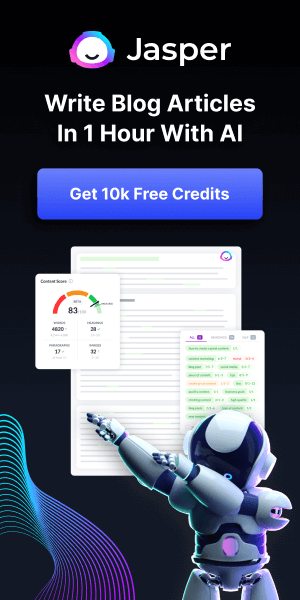
We are aimed on providing timely CRM tools, techniques, and resources to help their businesses grow their revenue and sales. Read more
Quick Links
- Recommended Tools
- Affiliate Disclaimer
- Write for Us
Copyright © 2024 CRMside.com. All Rights Reserved.

- Popular Tools
- Customer Relationship Management
- Web Development & Design
- Video Communication
- User Experience
- Hosting Tools
- Automation Tools
- Marketing & Analytics
- Fintech and Banking
- Streaming Services
No products in the cart.
CRM System Used by Coca Cola: An Insight into Corporate Practices
21 November 2023 - Customer Relationship Management
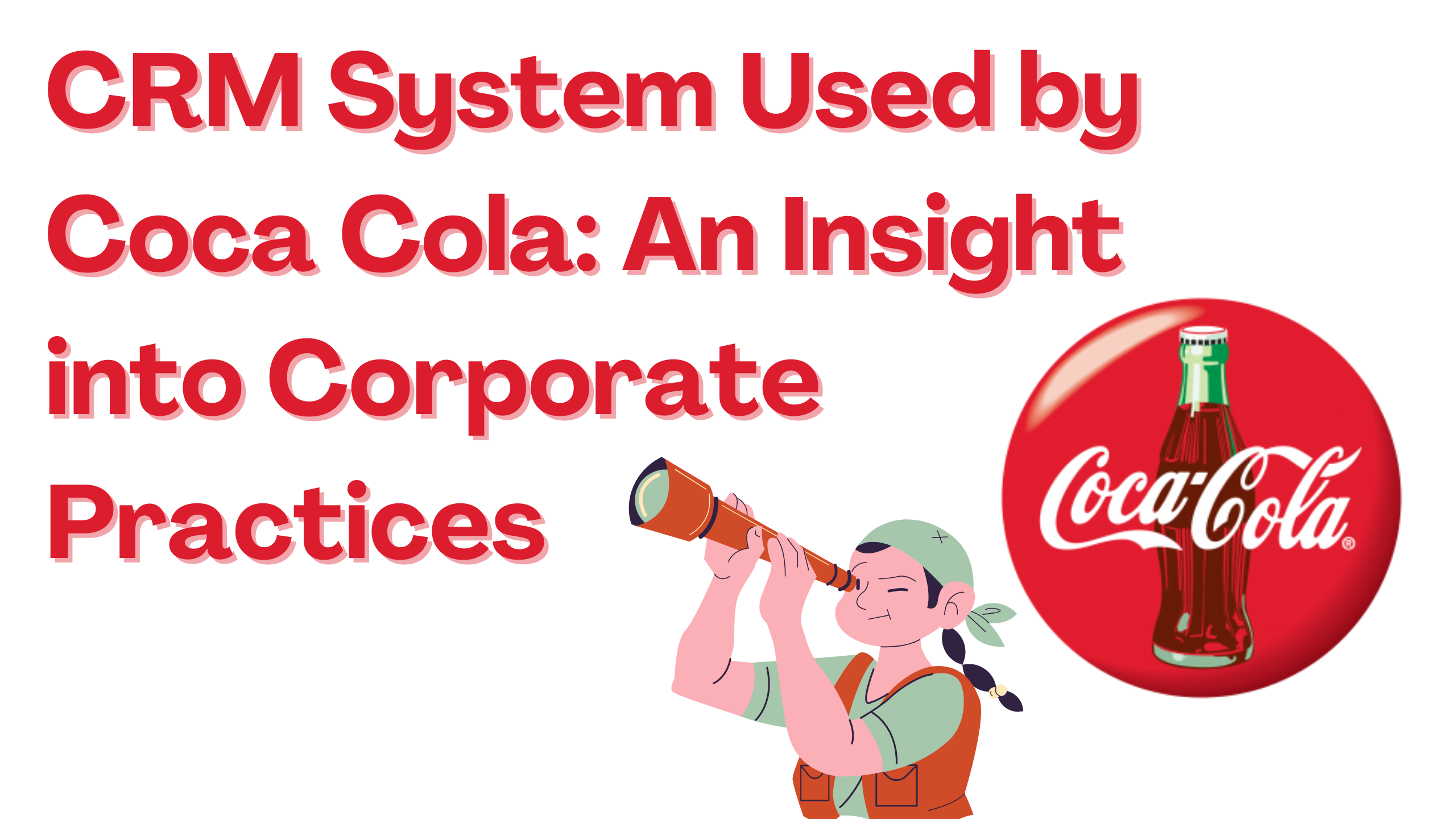
Share Insight
Share the comparison insight with others
Coca-Cola, a global beverage giant, embraces cutting-edge technologies to optimize its operations, and at the core of its corporate practices lies a sophisticated Customer Relationship Management (CRM) system. In this exploration, we uncover the CRM system adopted by Coca-Cola, providing a glimpse into its functionalities and highlighting its significance in refining business processes.
Understanding Coca-Cola’s CRM Landscape
Coca-Cola has strategically implemented a tailor-made CRM system that seamlessly aligns with its diverse business needs. Although specific details about the chosen CRM provider remain proprietary, it is evident that the company leverages a robust CRM solution to effectively manage customer interactions, elevate marketing strategies, and fine-tune sales processes.
Corporate Practices:
- The CRM system plays a pivotal role in building and sustaining meaningful customer relationships.
- Coca-Cola harnesses data-driven insights to comprehend consumer preferences and behavior, fostering enhanced engagement.
- Leveraging the CRM platform, Coca-Cola achieves effective sales management and forecasting.
- Streamlined sales processes ensure efficient order management and distribution, contributing to optimized operational efficiency.
- Coca-Cola employs a suite of CRM tools for executing targeted marketing campaigns.
- Personalized promotions and communication strategies are facilitated through the CRM system, enhancing brand visibility.
- The CRM system enables in-depth analysis of customer data, providing valuable insights into market trends.
- Coca-Cola utilizes analytics to refine its product offerings, ensuring alignment with evolving consumer preferences.
Exploring a Range of SaaS CRM Products
In the broader landscape of Customer Relationship Management (CRM), various Software as a Service (SaaS) solutions stand out, each offering unique features and capabilities. Let’s explore a selection of noteworthy CRM products that cater to diverse business needs.
1. Salesforce:
Salesforce stands as a versatile CRM solution, offering comprehensive features in sales, marketing, and customer service. Its scalability and robust toolset make it suitable for businesses of all sizes. Explore Salesforce
2. HubSpot CRM:
Known for its user-friendly interface, HubSpot CRM seamlessly integrates with marketing and sales tools. It’s an excellent choice for businesses seeking an integrated approach to managing customer relationships. Discover HubSpot CRM
3. Zoho CRM:
Zoho CRM, a cloud-based solution, is tailored for small to large enterprises. It emphasizes automation and customization, providing flexibility to businesses aiming to streamline CRM processes. Learn More about Zoho CRM
4. Microsoft Dynamics 365:
Microsoft Dynamics 365 integrates CRM and Enterprise Resource Planning (ERP) capabilities, offering a comprehensive business application suite. It caters to businesses seeking an all-encompassing solution for managing customer relationships and operational aspects. Explore Microsoft Dynamics 365
5. Freshsales:
Freshsales, with its intuitive interface and AI-powered insights, focuses on sales acceleration. This CRM software enhances the sales process by providing actionable data and facilitating personalized customer interactions. Discover Freshsales
The integration of a robust CRM system is fundamental to Coca-Cola’s operational efficiency and customer-centric practices. As businesses explore a range of SaaS CRM products, understanding the corporate applications of such systems provides valuable insights into optimizing customer engagement, sales, marketing, and data analytics.
Transform Your Corporate Practices with Subscribed.fyi!
Ready to revolutionize your corporate practices? Join Subscribed.fyi to unlock exclusive deals on 100+ SaaS tools. Sign up for free today and harness the power of savings, making your corporate journey even more impactful. Check our exclusive deals and save money today Subscribed.fyi Deals!
Relevant Links:
- HubSpot CRM
- Microsoft Dynamics 365
- Subscribed.fyi
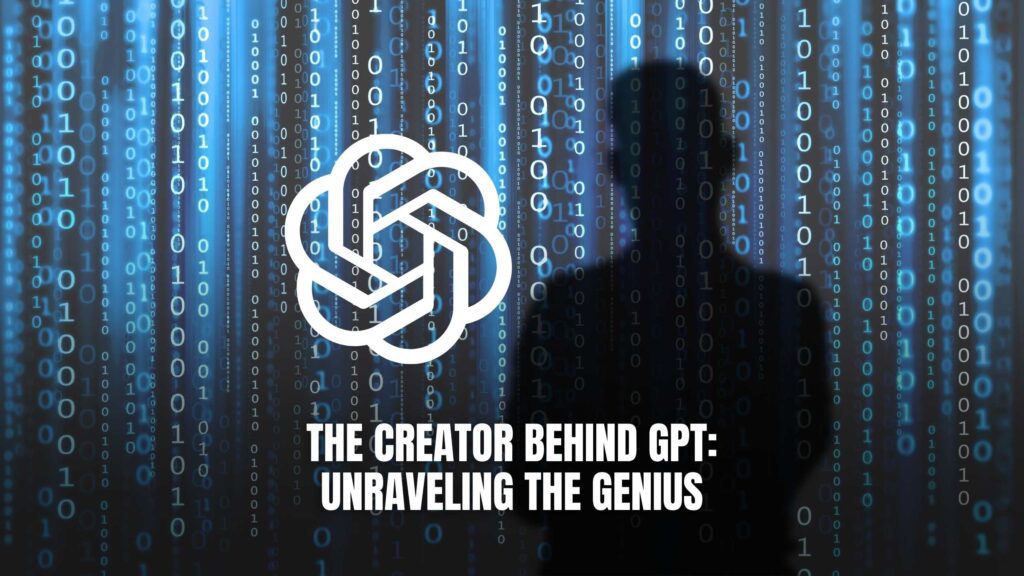
The Creator Behind GPT: Unraveling the Genius
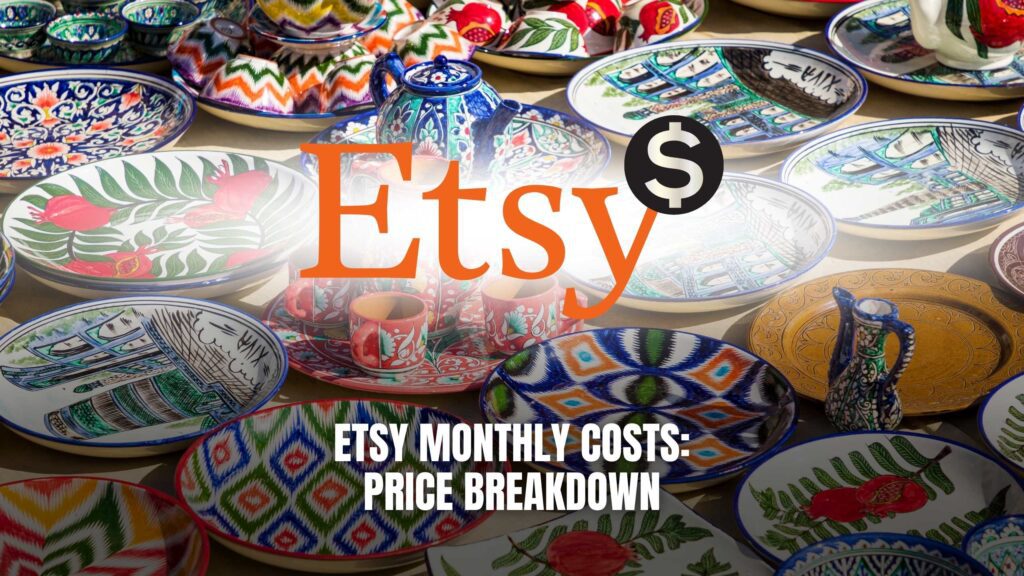
Etsy Monthly Costs: Price Breakdown
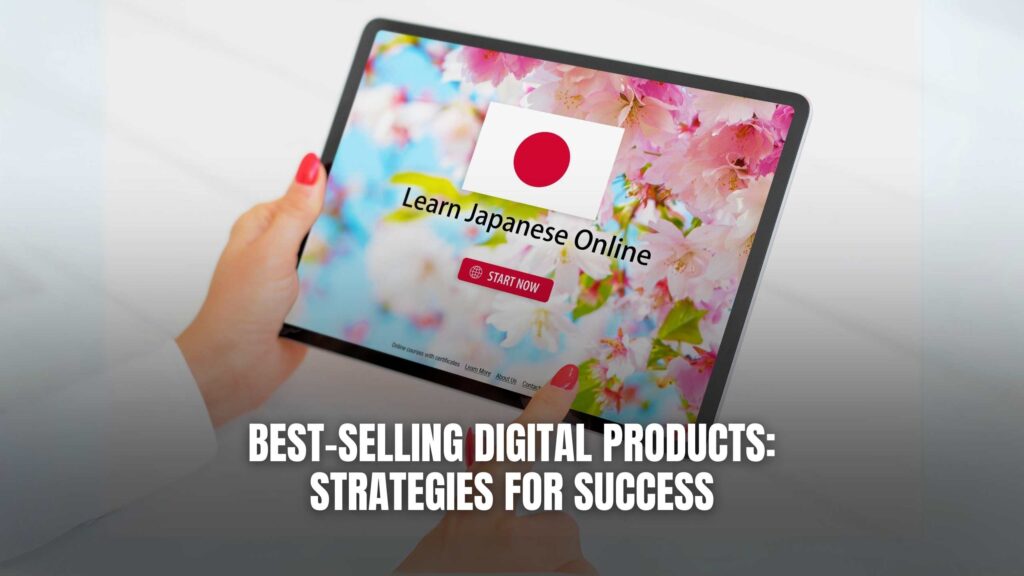
Best-Selling Digital Products: Strategies for Success

Top AI SEO Tools: Making the Right Choice
Coca-Cola Germany
“ We literally have billions of transactions a day on Salesforce. And everything is connected, collaborative, and mobile.” Ulrik Nehammer, CEO

Related Stories
- Shakey’s Pizza finds perfect ingredients for digital engagement
- Bespoke identifies key decision makers by crunching oenophile data.
- From startup to scaling up: Why SHOPLINE focuses on customer success
The formula for global success
The changing flow of business.
When a company has been around as long as Coca-Cola, it sees a lot of customer service technologies and philosophies come and go. But with Salesforce, Coca-Cola Germany feels it’s found a solution that will be with the company for the long haul.
“In the past, big companies outcompeted smaller companies. But that’s history. Today, the fast companies outcompete the slow companies,” explained CEO Ulrik Nehammer. “We needed to get much faster, work on collaboration, connectivity, and scalability — and all that in a mobile context. Salesforce has been a fantastic partner and a great help for us.”
The sweet spot
Impressed with its flexibility, Coca-Cola Germany is using Salesforce Salesforce Platform as the principal technology behind its sales and customer service efforts. The company is powering multiple parts of its business with custom apps built on this platform.
Thorsten Kohler, CEO of Your SL, Coca-Cola Germany’s Salesforce implementation partner, explained the platform and its scalability: “It’s like a big toolbox. Out of that toolbox you can quickly build new applications for any department in your company.”
Coming together to serve customers
Salesforce Platform also provides unprecedented connectivity. It’s an advantage Coca-Cola Germany didn’t find with other systems it had seen.
“We’ve seen a lot of systems, but they weren’t 100-per cent connected. With Salesforce Platform, we all see everything at the same time,” said Nehammer.
Now, with departments from bottling locations to field reps using apps connected in the cloud on the Salesforce platform, the company is able to take care of customers as one big team.
“With everything connected on this platform, everyone knows what’s going on with our customers,” said Kai Uhlemann, head of mobile. “That’s very important for us.”
Coca-Cola Germany is now able to instantly solve issues that once took days just to spot. “We call it connecting the dots,” said Nehammer. “If there’s a delivery that’s gone wrong, immediately the customer sees it, the sales rep will see it, distribution will see it, and I see it.”
With the help of Salesforce, the company’s technical call centre and repair departments are running like a precision machine.
With the previous system, the call centre and repair department suffered from frequent downtime, slow mobile app sync-up time, and an overall unsatisfactory user experience.
With Service Cloud, call centre support agents have instant access to customer history. They can log issues, generate work orders, and dispatch field service technicians via a custom field in the service mobile app — all in real time. The mobile app even plans out the optimal route for most efficiently completing the day’s service requests.
The company’s in-house repair facility, which formerly had technicians tracking their jobs on paper, has also been brought into the fold. Now connected to Service Cloud, technicians can alert customer-facing sales reps the moment repairs are completed. Overall, Coca-Cola Germany’s technical services departments have seen a 30 % increase in productivity.
“This has been a massive step forward for us,” said Andrea Malende, business process expert and mobile solutions. “I’m amazed how quick and smooth the implementation was.”
Refreshingly present
Custom mobile apps integrated into Sales Cloud have also been a far-reaching component of Coca-Cola Germany’s account service advancements. Being able to stay totally connected to crucial customer data has done more than just allow work on the go. It’s helping the company make better decisions for customers.
“The most dangerous place to make a decision is in the office,” said Nehammer. “You need to make decisions where the customer is.” Retailers are enjoying the benefits too. Armed with tablets running these fully connected custom apps, field reps have the data to give retailers personalised service.
Excellence in store
A fountain of opportunity.
With a legendary brand to sell and Salesforce’s cutting-edge technology helping power its efforts, Coca-Cola Germany is more excited than ever about its future in the market.
“We’re just getting faster and it totally excites me,” said Nehammer. “It’s a very important time in history to have a great brand coupled with great technology. We are on to something very, very special. Some would call it a secret formula.”
Keep exploring stories like this one.

Prudential Singapore personalises engagement for one million customers

ABS-CBN becomes a leader in social media and creates new business opportunities

ADP transforms sales processes with social selling and mobile apps.

The Salesforce platform helps draw fresh sales leads directly from social media, while mobile apps give team members the flexibility to check accounts and sign contracts on the road.
Questions? We’ll put you on the right path.
Ask about Salesforce products, pricing, implementation, or anything else — our highly trained reps are standing by, ready to help.

- På svenska
- Ammattikorkeakoulut
- Centria-ammattikorkeakoulu
- Opinnäytetyöt (Avoin kokoelma)
- Näytä viite
CUSTOMER RELATIONSHIP MANAGEMENT : case study Coca-Cola Company
Ling, xiaojing (2017).
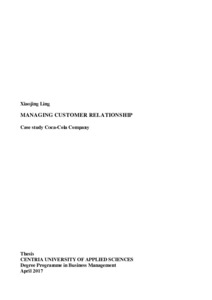
Avaa tiedosto
Tiivistelmä, selaa kokoelmaa, henkilökunnalle.
- CRM Software and Systems /
Big Brand CRM Case Studies
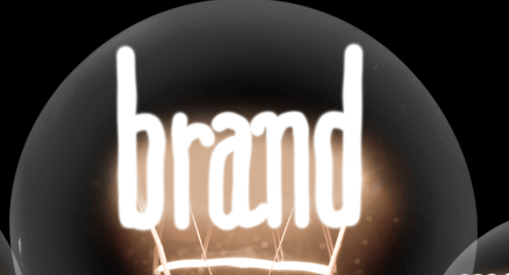
- British Airways
- McDonald's
Our site is reader-supported – by clicking our links, we can match you with a potential supplier, and we may earn a small commission for this referral.
Apple, Amazon, and… your business? Join the ranks of the planet’s biggest brands, and find out how CRM is the secret to their success
How did a handful of ambitious thinkers take simple ideas and grow them into instantly recognisable brands, and… into companies worth hundreds of billions of pounds?
Well, they did it by retaining a firm focus on the customer. And they did that through the use of CRM (Customer Relationship Management) .
- A type of software (such as Maximizer or Salesforce ) that helps businesses manage leads, deals, and clients, and craft targeted marketing campaigns.
- The specific strategies via which a business engages and retains its existing customers.
With CRM , the Tescos and Amazons of this world were not only able to win new customers, clients, and users – they got lifetime value out of them. With targeted marketing campaigns , these brands hit the right people with the right offers, at exactly the right time.
So, what kind of lessons can you take from the best in the business? Is CRM the key with which you can unlock your own company’s potential, and fuel commercial growth on a scale that rivals the big guns? Let’s take a look at our top 11 CRM case studies from the world’s leading brands . Or, if you're just ready to get started with a CRM system yourself, check out our recommended partners below. 1. Tesco CRM Tesco is a truly global business. It’s one of the world’s top 10 retailers , with supermarkets across Asia, Europe, and North America. With more than 3,400 stores in the UK alone, you’ll probably know it as your first port of call for a spontaneous pint of milk, or for an indulgent £3 meal deal during your lunch hour. So, what’s the secret to Tesco’s success? Well, it boils down to one main factor: The Tesco Clubcard . Tesco CRM: Case Study The Tesco Clubcard is Tesco’s way of rewarding its most loyal customers. For every pound you spend online or in-store, you’ll get a point. These points, when accumulated, can be traded in for Tesco Clubcard ‘vouchers’ (for instance, 150 points gets you a £1.50 voucher). A voucher can then be traded in for rewards, such as an afternoon at Cineworld with the kids (a timeless experience), or an evening at Pizza Express (enjoy it while you can). Clubcard holders can also collect points at Tesco fuel stations, and by filling out feedback surveys online. What’s in it for Tesco? Returning customers that are invested in the brand, and whose opinion Tesco can leverage to continue improving its growing basket of offerings. 2. Apple CRM This one needs no introduction. Founded by visionary Steve Jobs in 1976, this instantly recognisable brand is the apple of many a tech-lover’s eye. Apple has given us the iPad, iPhone, iMac, and Apple TV. But anyone who’s ever used one of its slick, stylish products knows that Apple’s appeal goes far beyond its niftiest handheld devices… … because it’s how it treats its customers that’s the key to Apple’s success. Apple CRM: Case Study Let’s take Apple ID as an example. If you’ve ever used iTunes (Apple’s online music streaming service), you’ll have an Apple ID – and if you’ve ever used an Apple device, you’ll have had to register it using an Apple ID, too. These unique IDs synchronise across devices, remember music and film selections, and provide personalised recommendations based on what’s you've been watching or listening to. For the user, it offers convenience. And for Apple, it’s a constantly updating data set, telling the company exactly what its customers like and allowing for effortless, targeted marketing. It’s…. CRM, done well. 3. Uber CRM Uber arrived in 2009 to spearhead the ride-sharing revolution, and has quickly become a household name. But, with a huge host of new competitors driving costs down (not to mention a few other issues ), Uber’s monopoly over its 95 million worldwide monthly users could be under threat. Can Uber hold on? And what can help us understand how successful Uber has been thus far in retaining its enormous customer base? Uber CRM: Case Study Well, CRM is a good place to start – and for Uber, it’s industry-leading CRM software provider Salesforce that’s powering the ride-sharing giant’s strategy. Salesforce helps Uber extract data from people engaging with its brand on social media. With this system in place, Uber can reply with haste to customer complaints, and track all its interactions with the public from an intuitive dashboard. And, of course, it runs its own loyalty program. Uber Rewards lets you earn points every time you ride or eat with Uber, and redeem them across its increasing range of services. It’s a textbook example of how Uber is incentivising customers to keep relying on its brand, as it continues to branch out . 4. British Airways CRM In the hotly contested, heavily consumer-oriented aviation space, you’ve got to get your CRM strategy right. And, clearly, British Airways (BA) does – flying 145,000 people to more than 200 destinations every day . So, why do its customers keep coming back? The answer can be summed up in two words… Executive. Club. British Airways CRM: Case Study The British Airways Executive Club is an example of CRM loyalty schemes done right. Free to join and with no ongoing charges, the club allows customers to earn ‘Avios’ points through purchasing flights, hotel stays, holidays, or car rental through BA or its partners. Avios points can then be redeemed for discounts on travel or accommodation with (you guessed it!) BA. Customers can save their meal and seat preferences, making for a smoother, more seamless re-booking experience. And, as they continue to fly with BA, they’ll be able to progress through the levels of Executive Club membership – from blue to bronze, silver to gold, then (maybe one day) the elusive ‘Premier’ tier. To keep track of all this, BA has been been using a CRM solution called Teradata since 2002. It allows the airline to keep track of all the customers on its books, and re-engage them with offers and deals targeted to their level of membership and favourite destinations. 5. Nokia CRM Nokia has been around the block a few times. We’ve all owned one of its basic, ‘brick’ design mobiles at some point, and while these phones may seem a bit antiquated now, they’re still virtually indestructible – and perfect for a quick game of Snake while waiting for the bus. Despite iPhones and Galaxys hogging the plaudits more recently, Nokia’s brand is still ticking away. It's currently valued in the region of a whopping 10 billion USD – and Nokia stock is poised to make an unexpected comeback in 2021 . So, what’s its secret? CRM, of course! Nokia CRM: Case Study Nokia implemented Salesforce (that name again) to help manage the size and diversity of its client base. Salesforce allows Nokia to customise its product range and marketing to suit geo-specific locations. Nokia’s collaboration with CRM brought order to chaos, empowering marketing departments across countries and languages to organise customer data. Through the selecting and segmenting of data into specific target groups, Nokia’s team saw more effective lead generation – which probably helps explain why its brand is still thriving. 6. McDonald's Every day, McDonald’s serves almost four million customers in the UK alone – about the population of New Zealand. Worldwide, that figure’s more like 69 million – roughly the size of Great Britain’s own populace. So, with such a vast empire and super-sized customer database, how does this fast food giant ensure their customers keep lovin’ it? With an industry-leading CRM strategy, that’s how. McDonald's CRM: Case Study McDonald’s partners with Astute Solutions , allowing the restaurant chain greater insights into consumer feedback and satisfaction levels. Being able to assess restaurants by region, or even individually, means that McDonald's can quickly spot potential customer relationship issues, and resolve them before they become a serious problem. And, with Astute Solutions, McDonald’s can also: Provide both its franchisees and corporate managers with live access to customer information Integrate data from its dynamic network of restaurants into an effective CRM tool Increase the accuracy of its reporting, and inform more intelligent decision-making As Christopher Garrity, McDonald’s’ own Senior Director of Customer Satisfaction, espouses: “CRM [is a] critically important function for any large company. It’s clear that Astute understands the important role it plays, and meets the ever-changing needs of our prime customers through continued innovation.”
Prime customers… was the pun intended? We don't know.
What we can tell you, though, is that one too many Big Macs may leave you feeling bloated and unmanageable… but your SME’s customer database doesn’t have to be. Browse our guide to the best CRM systems for restaurants to learn more, or click below to start comparing CRM software quotes for your business.
7. Coca Cola CRM

While Coca-Cola’s iconic recipe has remained a secret since 1886, this global beverage giant has been less coy about the other secret of its success – a dedication to the customer. It came as no surprise when Coca-Cola’s German branch adopted Salesforce – but what role did CRM software play in engineering the soft drink goliath’s continued growth?
Coca-Cola CRM: Case Study
“We needed to get much faster, to work on collaboration, connectivity, and scalability — and all that in a mobile context. Salesforce has been a fantastic partner, and a great help for us.”
That’s Coca-Cola Germany’s CEO, Ulrik Nehammer. He’s happy, because his customer service team is happy. And they’re happy because CRM software allows them instant access to customer history – which, in turn, allows them to hit their targets, and deal more efficiently with complaints.
With Salesforce, Coca-Cola Germany’s team can easily log issues with customers or suppliers, and then respond by dispatching field service technicians in real time. The result? A sweet 30% increase in productivity . Refreshing!
8. Unilever CRM

Also known as Europe’s seventh most valuable company, Unilever’s products are available in almost 200 countries around the world. With brands like Lipton, Magnum, and Hellmann’s under its considerable belt, Unilever has its fingers in a lot of pies. But does it have its finger on the pulse when it comes to managing its customer relationships?
Unilever CRM: Case Study
If you guessed yes, then you’re absolutely right. With the help of SAP CRM , Unilever improved its call centre capabilities, and boosted the productivity of its consumer advisory representatives. Just ask one of its head honchos:
“[CRM] enables faster response time to queries and needs raised by consumers. It provides for effective maintenance of our customer database, and allows for easy access to customer information for analysis and strategy development.”
- Efren Samonte, Commercial Director – Unilever Philippines
And let’s face it, the proof of Unilever CRM’s effectiveness is, quite literally, in the pudding. Because if you’ve ever scoffed down a Magnum on a hot summer’s day, then you’ve witnessed first-hand the effectiveness of Unilever’s ability to keep customers coming back. Can you emulate them?
Hopefully! But to do so, you’ll need your own CRM first. While there are some free options you can go with, these are limited, not scalable, and certainly not fit for ambitious businesses.
Nope – your best bet is to complete our quick, free quote finding form , to browse CRM options for your SME. We’ll just ask a couple of quick questions, including how many people you need the software for, and what features you’ll need. It takes half a minute at most, and when you’re done, you’ll receive quotes tailored to your business’ specific needs .
9. Zara CRM

Leading European clothing brand Zara specialises in fast fashion at low(ish) prices, and the profits are also moving quickly – it made almost 19 billion USD last year. But is it the price point that keeps Zara’s customers coming back, or its relentless, CRM strategy-powered focus on the customer? We think the latter.
Zara CRM: Case Study
Zara was one of the first to pioneer the use of personal digital assistants (PDAs) to capture customer data in real time – not just on transactions, but on their customer’s preferences and habits. CRM software comes in when it’s time to use this data to sell, sell, sell, re-engaging existing buyers with fresh discounts and campaigns.
10. BMW CRM

Unless you’ve been living in a cave for the last hundred years, you’ll instantly recognise BMW’s iconic logo. Producing well over two million vehicles per year, and with its status as a film icon firmly cemented, BMW’s success shows no signs of slowing down. And though the cars may have changed a bit since the company was founded in 1916, its customer focus has remained just the same.
BMW CRM: Case Study
And again, a successful CRM strategy underpins it all. To execute it, BMW teamed up with Legacy Lifestyle to create a luxury loyalty scheme called – wait for it – ‘The Owner’s Circle’.
The Owner’s Circle lets BMW owners track their car’s financing and maintenance. Owners of new or old BMWs can also register their vehicles online. From here, they can check the status of a new car order, view the maintenance history of a used car, or get reminders about upcoming service milestones. There’s also an owner-to-owner chat box thrown in, for ultimate convenience.
All this serves to strengthen the post-purchase relationship between BMW and its customers, ensuring an enduring connection long after they’ve rolled their car out of the garage.
And, because any points earned through the Owner’s Circle can be used on a variety of luxury items, it strengthens BMW’s status as a luxury brand – and ensures it’ll be continuing to attract a lucrative clientele for many more years to come.
11. Amazon CRM

We could spend all day throwing statistics demonstrating Amazon’s popularity around, but let’s face it – we’re all familiar with Amazon. As the world’s leading online retailer, Amazon continues to go from strength to strength, led by its enigmatic founder and CEO Jeff Bezos. But how have Bezos and the gang been so good at winning, retaining, and consolidating users of their wildly popular online platform?
Amazon CRM: Case Study
By using CRM, that’s how. And if you’ve ever used Amazon (and the data says you probably have), you’ll know how hard its tailored offers, recommendations, and promotions – all based on your past purchases – can be to resist.
Plus, by asking its customers to register for an account, Amazon makes it extremely easy for customers to re-order. Cash-rich, time-poor consumers can pay with a click, and have their goods gracing their doorstep within 24 hours.
Want to know more? Check out our full Amazon CRM case study to read more about how this ecommerce behemoth is crushing the competition.
We’ve said it before, and we’ll say it again – customers are the most important part of your business. Without them, you wouldn’t have one!
With that in mind, then, ensuring you have at least some kind of CRM strategy is crucial. How will you draw in new leads, juggle unfolding deals, and manage prospects and client relationships? How will you keep your customers engaged, ensuring they continue to use your services while identifying with your brand and values?
If these big brand CRM case studies have shown us anything, it’s that CRM software is just as important as the strategic side – all of the big companies are using it to manage customer data, and extract key insights which can help improve customer experience. Here are some CRM systems that we can highly recommend for all types of businesses:
var appWikiRequestUrl = “https://appwiki.nl”;
Not sure which CRM software is right for your business? To find out, simply fill in our 30-second form . We’ll ask a couple of questions about your software needs, and you’ll receive tailored CRM quotes from leading UK providers . And who knows… give it a few years, and your business could be on this list!
Written by:

Amazon CRM Case Study
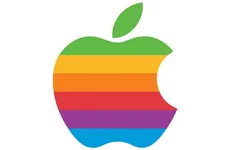
Apple CRM Case Study

CRM Software and Systems

Common CRM Problems and Solutions

The 10 Best CRM Strategy Examples

Top 5 Goals Your Business Can Achieve with CRM

The 7 Best CRM Systems for Small Businesses

The 4 Best Analytical CRM Software Solutions for Businesses
- Bahasa Indonesia
- Sign out of AWS Builder ID
- AWS Management Console
- Account Settings
- Billing & Cost Management
- Security Credentials
- AWS Personal Health Dashboard
- Support Center
- Expert Help
- Knowledge Center
- AWS Support Overview
- AWS re:Post

We shut down our data center in Hangzhou and migrated all our applications to AWS, so as to save infrastructure costs while providing stable and reliable services through AWS."
Group Manager of Enterprise Architecture, Cloud Service & IT Operations, Swire Coca-Cola
By migrating our entire IT infrastructure to AWS, we achieved digital transformation of our IT systems, which can serve millions of retail customers or even hundreds of millions of consumers rather than the previous 10,000 sales representatives."
Ke Li
Manager, Cloud Service & IT Operations, Swire Coca-Cola
The Challenge
Closing legacy data centers.
After deciding on its strategy to pursue a cloud computing–based digital transformation, Swire Coca-Cola made another bold decision to close its three on-premises production and disaster recovery data centers and migrate all of its business systems, including SAP and its CRM, to the cloud. According to Dominic Wheeler, CIO of Swire Coca-Cola, the company saw an opportunity to rid itself of the traditional burdens of IT and enable the company’s IT team to work on accelerated innovations and enhance competitive technologies by shutting down its data centers and migrating all its business systems to the cloud, rather than adopting a hybrid cloud approach. When the tenancy of its data centers was about to expire, Wheeler proposed shutting down the data centers altogether and migrating completely to the cloud. The company’s business and leadership teams approved the bold strategy.
While migrating to the cloud was a bold, forward-thinking decision, the implementation required a refined and practical approach to ensure a smooth transition from the company’s legacy on-premises data centers to the cloud. Ultimately, Swire Coca-Cola worked out a migration plan with almost no impact on business—a plan that ensured enhanced function and performance of all IT systems and confidence in its success from every department—through comprehensive project management and design. After several rounds of planning, Swire Coca-Cola chose AWS for the migration and to help its IT team carry out its ambitious digital transformation project.
“AWS is the world's leading cloud computing service provider. It offers advanced technologies, diversified services, and the ability to lead into the future, as well as the solutions to address the complex application environments of enterprises. At the same time, the company has a customer-oriented corporate culture, with its rapid response to customers and high efficiency in leveraging various resources to resolve problems and achieve goals,” said Calvin Ho, group manager of enterprise architecture, cloud service & operations at Swire Coca-Cola.
Going All-In on AWS
Swire Coca-Cola’s cloud migration strategy was approved at the end of 2017, and its implementation initiated in early 2018. All systems were migrated to cloud in November 2018, and the legacy data centers were closed in March 2019. By then, Swire Coca-Cola has successfully migrated all its systems to the cloud.
The entire migration process was simplified with a plan to carry it out in stages. The first step in the plan was network planning and testing. In its legacy data centers, Swire Coca-Cola had adopted a complete network topology design and network security settings for the entire business. Upon migration to the cloud, the security settings could not be changed, and applications couldn’t be migrated until proved safe through tests. In other words, applications could only be migrated to cloud after multiple rounds of tests. Applications that were loosely coupled with the core SAP systems—such as the development testing and the big data analysis systems—were the first to be migrated, and the planned approach was verified by their successful migrations. Eventually, the core SAP systems were migrated successfully. During the migration, online and offline systems ran in parallel until the total migration was completed in November 2018.
While the Swire Coca-Cola and AWS teams encountered challenges along the way, the ultimate success of the migration made it all worth it. For instance, the two teams worked together to overcome the difficulty of migrating the SAP systems to the cloud. Swire Coca-Cola's legacy data centers ran a complete set of SAP systems, using traditional clustering technology to configure high-availability (HA) architecture, as well as disaster recovery synchronization and switching functions based on storage replication. After migrating to the cloud, those capabilities would still be needed. However, as those services and concepts for traditional technical solutions don’t correspond directly to those on the cloud, the AWS and Swire Coca-Cola teams had to brainstorm alternative solutions. The AWS team, taking advantage of the capabilities of the AWS Cloud and the resources and assistance of its local and global teams, chose appropriate tools and leveraged overseas experience to conduct multiple rounds of stress tests and work out a solution that improved the system performance post-migration.
Swire Coca-Cola introduced a large number of third-party tools, such as SIOS HA, Veritas HA, F5, CheckPoint, Veritas NBU, CPM, CloudEndure, in the process of migrating to the cloud, which presented huge challenges for a migration project of this scale. Through the testing phase, the team found that the performance of some tools was not stable and assistance should be provided to migration tool developers to conduct software debugging. Some tool developers were small in size and had no team in China, and they had to develop tools according to the specific needs of Swire Coca-Cola. However, with the full support of the AWS Professional Services team, sales team, solution architects, and corporate support service team, this difficult task was successfully completed.
The Benefits
Ke Li, manager of cloud service & IT pperations for Swire Coca-Cola, concluded that full migration to AWS Cloud not only improved the performance of application systems but also delivered benefits to the company in the following three areas. First, the company can respond to business requirements quickly. Under its legacy data center model, it took a few months to prepare software and hardware resources, as it involved a long process of project establishment and approval, equipment selection, arrival, installation and deployment. The same process can be now completed within a few days on the cloud. Second, the company can enable business growth with new technologies. With the AWS Cloud services, technologies like in-memory database, serverless architecture, IoT, and AI can be quickly deployed to support business development. Third, the migration also reduced the operational and maintenance complexity of the underlying architecture, enabling the company to flexibly expand and dispatch resources in accordance with demand during peak and slack seasons. Swire Coca-Cola’s business systems primarily operate within the AWS China (Beijing) region operated by Sinnet. The AWS cloud services used include Amazon EC2 Dedicated Hosts, Amazon Simple Storage Service (Amazon S3) , Amazon Virtual Private Cloud (Amazon VPC) , Amazon VPC Flow Log, Amazon Redshift , Elastic Load Balancing , Amazon Elastic Block Store (EBS) , Amazon Relational Database Service (Amazon RDS) , AWS Lambda , Amazon API Gateway and Amazon Elasticsearch Service . With the opening of the AWS Asia Pacific (Hong Kong) Region, Swire Coca-Cola plans to deploy its Taiwan and Hong Kong operations in the new AWS Region.
Swire Coca-Cola will continue to advance its comprehensive digital transformation strategy. The migration of data centers and application systems was only a starting point. The company will focus on optimizing the architecture of traditional applications to meet the demand for high efficiency, high speed, and high flexibility in the digital age. Moreover, through this process, the IT team refreshed their mechanisms and methods on operation and maintenance, saving more time to support the business growth.

Swire Coca Cola Customer Video
Mobvista reference architecture.
Ending Support for Internet Explorer

- English - United States
Case study: How does Coca-Cola do it in the digital world?
Por Oscar Agüero | Jan 27, 2023
Coca-Cola is undoubtedly one of the most recognized brands in the world, with a market presence that dates back to its beginnings in 1886 when John Pemberton served the first Coca-Cola. Today, the Coca-Cola Company sells hundreds of beverage brands in more than 200 countries. It is calculated that the average person consumes approximately 275 cans of Coca-Cola annually in the United States alone.
- The digital challenge for Coca-Cola and the "Share a Coke" campaign is a success story.
- The digital challenge for Coca-Cola.

The digital challenge for Coca-Cola
The challenge for companies like Coca-Cola is that their products' brand presence and positioning are no longer the main issues; instead, they look at marketing strategies oriented toward connection, loyalty, and innovation with their consumers. All this is what James Sommerville, VP of Global Design of Coca-Cola Company, commented for Adobe Summit: We are a 130+-year-old brand that has always been in the experience business. An ice-cold Coke, ice, and lemon in a big glass, there's a fizz and a tingle when you drink it, and that's all very sensory, so we still believe in a physical analog world, which is at the heart and soul of our product, but at the same time, we want to transfer and transform our business, to be able to deliver that experience on a digital platform. The important thing for brands today is to listen to the consumer. Coca-Cola sells almost 2 billion servings daily, and one of the goals we would like to achieve is 2 billion daily conversations. Two-way conversations so that we not only provide the perfect beverage at the moment they need it but also digital interaction with the customer. For a company like Coca-Cola that handles large volumes of consumers, regions, products, and channels, it is challenging to have the right platforms to organize communication strategies and effectively serve their customers. Here is where Coca-Cola has developed multiple communication, promotion, and loyalty programs, through digital platforms such as mobile applications, eCommerce B2B / B2C, production of enterprise digital content, and even the creation of the first Coca-Cola flavor in the metaverse. The "Share a Coke" campaign is a case of success.
Let's examine one example to understand how Coca-Cola uses technology to connect with its consumers. Many will remember the "Share a Coke" campaign in which the logo on the can was replaced with famous names, encouraging customers to share a Coke with a friend or family member. This massively successful social marketing campaign underpinned its process with two main elements to achieve the digital rollout.
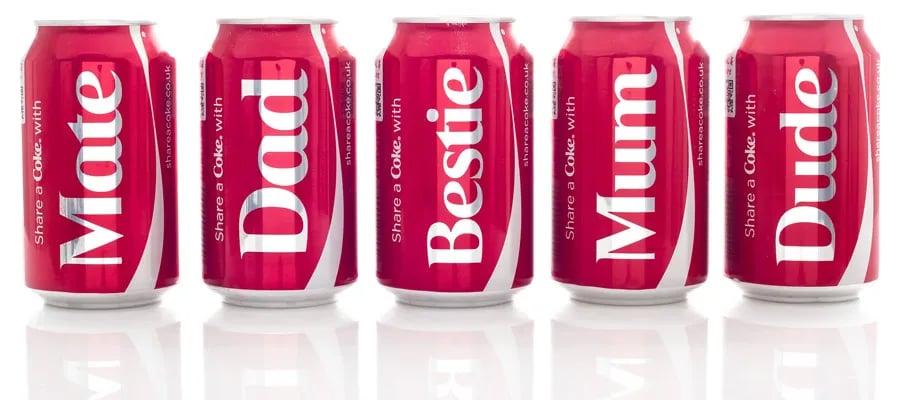
The first element was the Customer Experience Management platform, which is necessary to manage the campaign data:
- Segmentation
- Customer profiling
- Identity management
- AI-powered learning
- Creation of customer experience applications
The Adobe Experience Platform is the foundation that helps companies like Coca-Cola develop a robust foundation for delivering the right experiences to consumers across all channels. >> Case study: Starbucks success with the Inbound Marketing methodology<<

The management of digital assets in this Coca-Cola campaign was also an important task to solve, with crucial aspects such as:
- Personalized and consistent content for each profile
- Content suitable for each channel/profile
- Automation rules to be able to scale with minimum effort
- Ease of creating, distributing, and optimizing experiences on a large scale.
All of this may seem like a Herculean task. Still, it is with the help of specialized platforms that companies like Coca-Cola manage to implement these initiatives and achieve their objectives.
The second element is the Marketing Automation tool, required for a campaign that reached in the beginning alone more than 550 million personalized Coca-Cola, around 340,000 posts on Instagram with the hashtag #shareacoke, and a result by consumers of 96% with positive or neutral feelings towards the campaign.
All this is possible thanks to marketing automation platforms, where Marketo is a fundamental pillar to achieving engagement with customers throughout the customer lifecycle and delighting them to keep them as buyers and brand advocates.
Marketo Engage's always-on marketing principle was able to support Coca-Cola in automating the indispensable aspects of campaigns like this one: >> Main Advantages of Marketo<<
- Audience segmentation : Profiling communications consider behavioral, demographic, and channel data.
- Multichannel personalization : Tailored landing pages with conversion-oriented forms for customers receiving profiled communications from websites, emails, SMS, social networks, and events.
- Customer scoring (lead scoring) : Used this to determine the level of interest of each customer and drive the level of engagement at each stage of the funnel.
- Active marketing activities : Respond on time to a large contact base. Used automation to respond in real-time when a consumer activates a CTA, sending personalized content.
- Performance per campaign : Measuring performance in terms of ROI, revenue, investment, and funnel stage allows us to determine which investments yield the best returns.
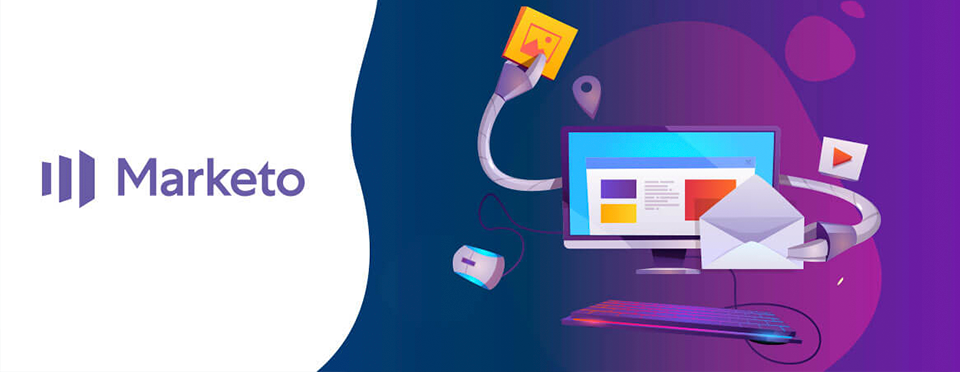
Related blog: Case study: Panasonic and its growth with Marketo .
We see how in an increasingly digital world, the challenge for many companies, like Coca-Cola, is how to replicate the physical experience of their products in the digital arena.
Here is where marketing efforts have to lead to the digitization of the experience, where digital processes, strategies, technology, and the consumer as the center of the digital ecosystem must converge.
Finally, the secret ingredient of any digital initiative that Coca-Cola has been developing is innovation in a Customer Experience that moves a consumer thirsty for new and better experiences.
Subscribe today!
Posts by topic.
- Customer Experience (76)
- Strategy (70)
- Methodology (44)
- e-Commerce (34)
- Business Process (31)
- Marketing (27)
- Digital Transformation (22)
Suggested Insights For You

Inbound marketing and UX Design fgreat customer experience
Inbound Marketing and UX design must work together to provide our clients with a great experience in our business, that is why today I bring you this...

Customer Experience in 2023
In today's digital age, customer experience is increasingly important. Consumers have more choices and can easily share their experiences online....

How the food industry is automating business management
In the new commercial dynamics, sales processes have had to adapt to the demands of digital users. The change has dramatically influenced consumer...
ICX SUBSCRIPTION
Come and be part of the latest specific insights provided by our experts, what’s next, are you ready.


Mobile Apps
- Mobile Application Development
- iOS Application Development
- Android Application Development
- Flutter Application Development
- React Native Application Development
- Website Development
- Angular Application Development
- React JS Application Development
- PHP / Laravel Web Development
- Python / Django Web Development
- NFT Marketplace Development
- NFT Token Development
- DeFi / dApps Development
Digital Marketing
- Social Media Marketing Services
- Search Engine Optimization Services
- Google Ads / PPC Services
- Content Writing Services
- Cloud Computing Consultancy
- Staff Augmentation
- UI/UX – Mobile Apps
- UI/UX – Web Apps
- Hire Software Developers
- Testimonials

Mr. Mrityunjay Ojha
Table of content, share this post.
Home » How Coca-Cola Increased Customer Engagement With Personalized Marketing
How Coca-Cola Increased Customer Engagement With Personalized Marketing
Introduction.
Coca-Cola is a global beverage company that has been a household name for over a century. Known for its iconic soft drink, Coca-Cola has been a leading player in the beverage industry, constantly innovating and adapting to market trends. One such trend is the increasing use of personalization in marketing, which involves tailoring marketing messages and advertisements to individual customers based on their preferences, behavior, and history. This case study will explore how Coca-Cola has utilized personalization in its marketing campaigns to increase customer engagement and brand loyalty.
Background on Personalization in Marketing
As consumers are becoming more savvy and selective about the brands they choose to interact with, personalization in marketing has become a key trend in recent years. According to a study by Accenture, 73% of consumers prefer to do business with brands that use their personal information to make their shopping experiences more relevant. Personalization can take many forms, from personalized product recommendations to targeted social media ads to personalized email campaigns.
Coca-Cola’s Personalized Marketing Strategy
Coca-Cola has implemented several personalized marketing campaigns to engage customers and increase brand loyalty. One example of Coca-Cola’s personalization strategy is its personalized bottle campaign. Customers could go to a website or in-store kiosk, type in their name or a special message, and have it printed on a Coca-Cola bottle. This created a unique and memorable experience for customers, as they now had a one-of-a-kind Coca-Cola bottle with their name on it.
Coca-Cola also used personalization in its digital marketing efforts. For instance, the company sent personalized email campaigns to customers, addressing them by name and offering them discounts or promotions based on their purchase history. The company also used targeted social media ads, showing advertisements to customers who had shown interest in similar products or brands in the past.
The Impact of Personalization on Customer Engagement and Brand Loyalty
Coca-Cola increased customer engagement and brand loyalty by implementing personalization in its marketing campaigns. Customers felt like the company was speaking directly to them and their unique needs and interests, which created a deeper connection with the brand. This is supported by a survey by Infosys, which found that 80% of consumers are more likely to do business with a company that offers personalized experiences.
Relevant Statistics
Following statistics highlight the importance and effectiveness of personalization in marketing and how Coca-Cola’s implementation of personalization has positively impacted customer engagement and brand loyalty.
- A study by Epsilon found that personalized email campaigns have an open rate of 29% higher than non-personalized ones.
- According to a report by Forbes, personalized product recommendations can increase sales by up to 15%.
- A study by Conversant found that targeted advertisements are up to 70% more effective than non-targeted ones.
In conclusion, Coca-Cola’s personalized marketing is a prime example of how personalization can help companies create a more memorable and engaging customer experience, leading to increased customer loyalty and a stronger connection with the brand. By leveraging technology and customer data, Coca-Cola created personalized marketing campaigns that resonated with its customers, increasing engagement and building brand loyalty.
How Can We Help…
Full Name *
Mobile Number
Country Name
Phone : +91 98912 46208
Email : [email protected]
Phone : +91-9891246208
Email : [email protected]
Coca-Cola Marketing Case Study
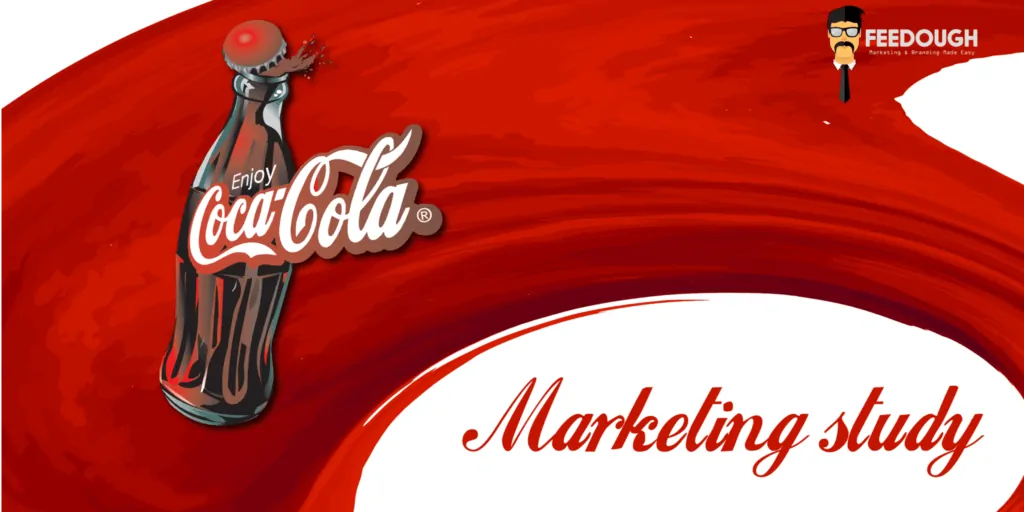
From the star ‘Coca-Cola’ drink to Inca Kola in North and South America, Vita in Africa, and Thumbs up in India, The Coca-Cola Company owns a product portfolio of more than 3500 products . With the presence in more than 200 countries and the daily average servings to 1.9 billion people, Coca-Cola Company has been listed as the world’s most valuable brand with 94% of the world’s population recognizing the red and white Coca-Cola brand Logo . Moreover, 3.1% of all beverages consumed around the world are Coca-Cola products. All this because of its great marketing strategy which we’ll discuss in this article on Coca-Cola Marketing Strategy .
Coca-Cola –
- has a Market capitalization of $192.8 Billion (as of May 2016).
- had 53 years of consecutive annual dividend increases.
- with the revenue of over $44.29 billion, is not just a company but an ECONOMY.
The world knows and has tasted the coca cola products. In fact, out of the 55 billion servings of all kinds of beverages drunk each day (other than water), 1.7 billion are Coca-Cola trademarked/licensed drinks.
Marketing history
Market research in the beginning.
It all started 130 years ago, in 1886, when a Confederate colonel in the Civil War, John Pemberton, wanted to create his own version of coca wine (cola with alcohol and cocaine) and sent his nephew Lewis Newman to conduct a market research with the samples to a local pharmacy (Jacobs pharmacy). This wasn’t a new idea back then. The original idea of Coca wines was discovered by a Parisian chemist named Angelo Mariani.
Pemberton’s sample was sold for 5 cents a glass and the feedback of the customers was relayed to him by his nephew. Hence, by the end of the year, Pemberton was ready with a unique recipe that was tailored to the customers taste.
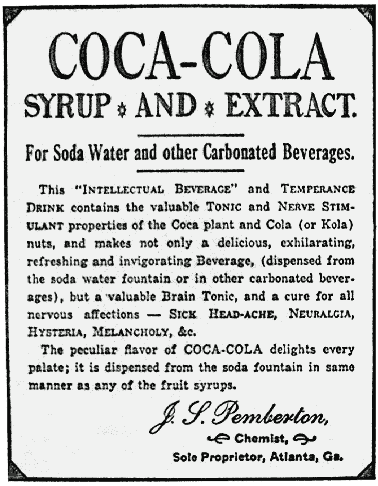
Marketing Strategy In The Beginning
Pemberton soon had to make it non-alcoholic because of the laws prevailing in Atlanta. Once the product was launched, it was marketed by Pemberton as a “Brain Tonic” and “temperance drink” (anti-alcohol), claiming that it cured headaches, anxiety, depression, indigestion, and addiction. Cocaine was removed from Coke in 1903.
The name and the original (current) Trademark logo was the idea of Pemberton’s accountant Frank Robinson, who designed the logo in his own writing. Not changing the logo till date is the best strategy adopted by Coca-cola.
Soon after the formula was sold to Asa G Candler (in 1889), who converted it into a soda drink, the real marketing began.
Candler was a marketer. He distributed thousands of complimentary coca-cola glass coupons, along with souvenir calendars, clocks, etc. all depicting the trademark and made sure that the coca cola trademark was visible everywhere .
He also painted the syrup barrels red to differentiate Coca-Cola from others.
Various syrup manufacturing plants outside Atlanta were opened and in 1895, Candler announced about Coca-Cola being drunk in every state & territory in the US.
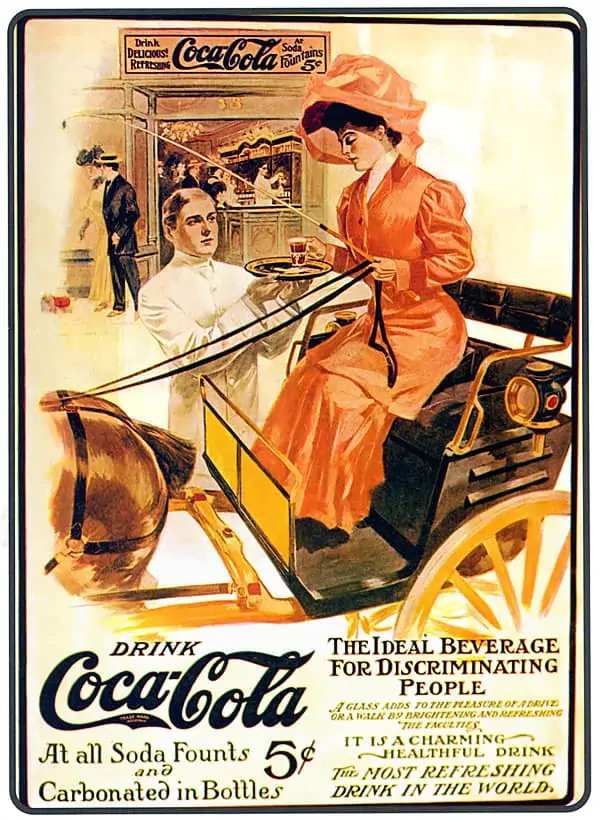
The Idea Of The Bottle
During Candler’s era, Coca-Cola was sold only through soda fountains. But two innovative minds, Benjamin F. Thomas and Joseph B. Whitehead, secured from Candler exclusive rights (at just $1) for bottled coca cola sales.
But Coca-Cola was so famous in the US that it was subjected to imitations. Early advertising campaigns like “Demand the genuine” and “Accept no substitutes” helped the brand somewhat but there was a dire need to differentiate. Hence, in 1916, the unique bottle of Coca-Cola was designed by the Root Glass Company of Terre Haute, Indiana. The trademark bottle design hasn’t been changed until now.
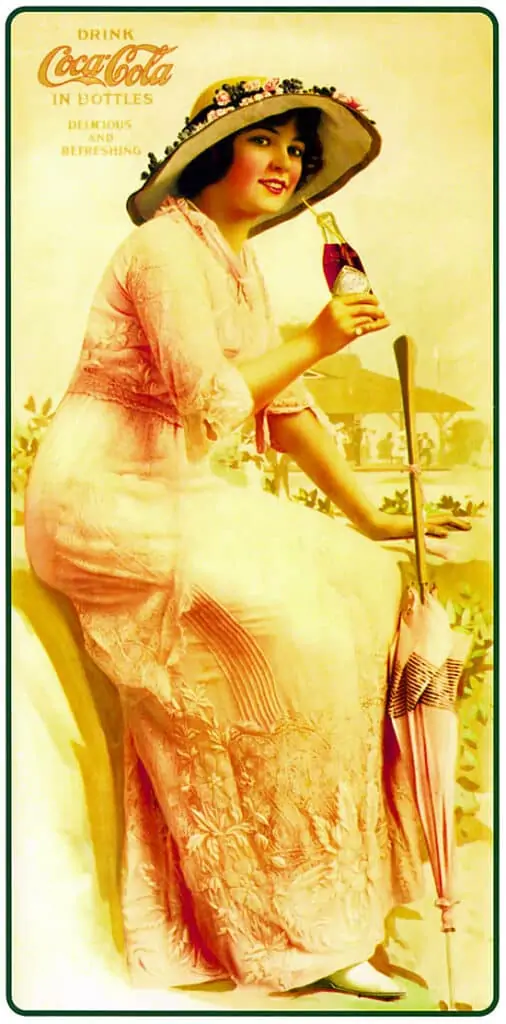
Coca-Cola Worldwide
In 1919, Candler sold the company to Robert Woodruff whose aim was to make Coca-Cola available to anyone, anytime and anyplace. Bottling plants were set up all over the world & coca cola became first truly global brand.
Robert Woodruff had some other strategies too. He was focused on maintaining a standard of excellence as the company scaled. He wanted to position Coca-Cola as a premium product that was worthy of more attention than any of its competitors. And he succeeded in it. Coca-Cola grew rapidly throughout the world.
Coca-Cola Marketing Strategies
The worldwide popularity of Coca-Cola was a result of simple yet groundbreaking marketing strategies like –
Consistency
Consistency can be seen from the logo to the bottle design & the price of the drink (the price was 5 cents from 1886 to 1959). Coca-Cola has kept it simple with every slogan revolving around the two terms ‘Enjoy’ and ‘happiness’.
From the star bottle to the calendars, watches and other unrelated products, Candler started the trend to make Coca-Cola visible everywhere. The company has followed the same branding strategy till now. Coca-Cola is everywhere and hence has the world’s most renowned logo.
Positioning
Coca-Cola didn’t position itself as a product. It was and it is an ‘Experience’ of happiness and joy.
Franchise model
The bottling rights were sold to different local entrepreneurs , which is continued till now. Hence, Coca-cola isn’t one giant company, it’s a system of many small companies reporting to one giant company.
Personalization & Socialization
Unlike other big companies, Coca-Cola has maintained its positioning as a social brand. It talks to the users. Coca-Cola isn’t a company anymore. It’s a part of us now. With its iconic advertising ideas which include “I’d Like to Buy the World a Coke” & “Share a Coke”, it has maintained a special spot in the heart of its users.
Diversification
Coca-Cola, after marking its presence all over the world, took its first step towards diversifying its portfolio in 1960 by buying Minute Maid. It now operates in all but 2 countries worldwide with a portfolio of more than 3500 brands.
Coca-Cola Marketing Facts
- Logo & bottle design hasn’t changed since the start.
- During its first year, Coca-Cola sold an average of 9 drinks a day.
- Norman Rockwell created art for Coke ads.
- Coke has had a huge role in shaping our image of Santa Clause.
- In the 1980s, the company attempted a “Coke in the Morning” campaign to try to win over coffee drinkers.
- In 1923, the company began selling bottles in packages of six, which became common practice in the beverage industry.
- Recently, it was in the news that Verizon acquired Yahoo for around $5 billion which is more or less the same amount the Coca-Cola Company spends on its advertisements.
- The number of employees working with the Coca-Cola Company (123,200 to be exact) is more than the population of many countries.
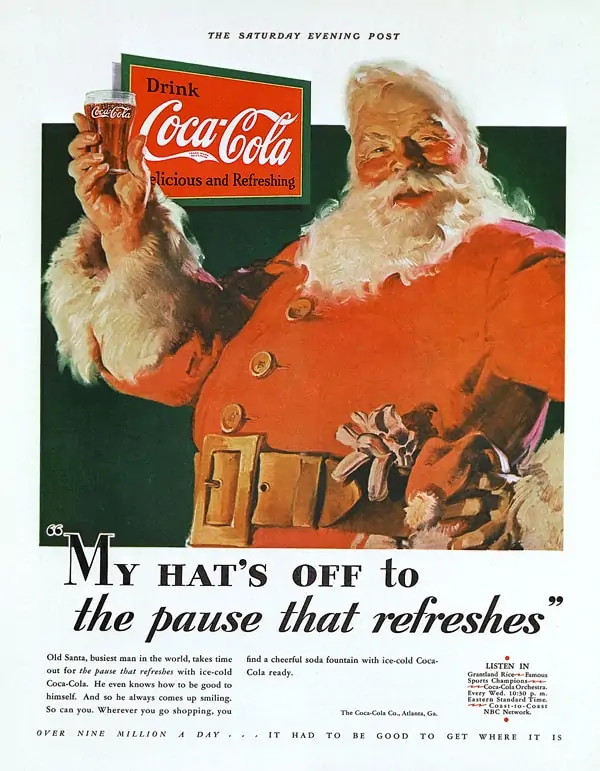
Go On, Tell Us What You Think!
Did we miss something? Come on! Tell us what you think about Coca Cola Marketing Case Study in the comment section.
A startup consultant, digital marketer, traveller, and philomath. Aashish has worked with over 20 startups and successfully helped them ideate, raise money, and succeed. When not working, he can be found hiking, camping, and stargazing.
Related Posts:
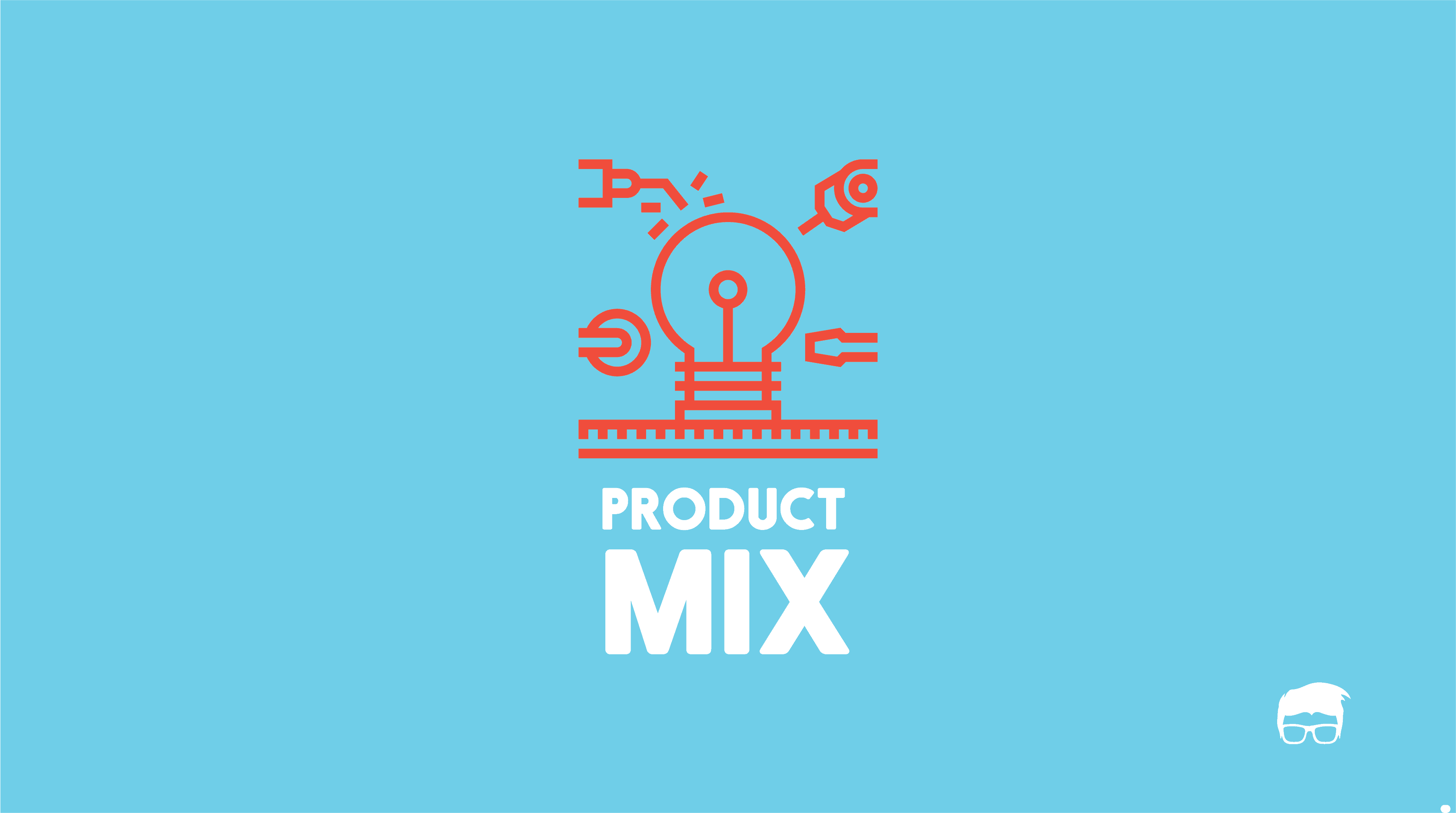
- Customer Experience
- Employee Experience
- B2B Experience
- User Experience
- Market Research
- Surveys & Interactive Flows
- Ticket Management
- CRM Contact Database
- Reporting Dashboards
- Routing & Escalations
- Analytics & Event Tracking
- Enterprise Suite
- Advanced Reporting
- Advanced Survey Builder
- Explore Pisano Customers
- Customers Choice on Gartner Peer Insights™
- Leo, Your AI-Powered XM Assistant
- Gartner Magic Quadrant Recognition
- Pisano vs Qualtrics
- Pisano vs Medallia
- Pisano vs QuestionPro
- An Introduction to Total Experience
- CX Articles
- EX Articles
- Sunday Digests
- CX Glossary
- EX Glossary

Case Study: Pisano Helped Coca-Cola to Collect Omnichannel Feedback for Beloved Loyalty App
Customer experience management and listening to the Voice of Customer provide important insights and advantages for companies to manage their business processes. Listening to the voice of the customer and understanding their needs, together with their feedback, in all sectors where the customer is directly or indirectly contacted, gives important clues to provide better service.
As an experience management platform, we help companies listen to the "Voice of the Customer" with our holistic approach and end-to-end customer experience management services at Pisano and work to establish a stronger bond with their customers.
With more than 2,800 products in more than 200 countries, t he Coca-Cola Company is the largest beverage manufacturer and distributor in the world and one of the largest corporations in the United States.
"Daha Daha" is the loyalty program of Coca-Cola in Turkey. "Daha Daha" allows its consumers to use the promo codes on the Coca-Cola Turkey branded products to earn points. With that points, customers can easily redeem special offers & gifts.
Coca-Cola needed to measure the satisfaction of its Daha Daha users and design a structure that could be easily triggered by specific defined events on the platform.
Pisano helped Coca-Cola to measure the CSAT score through collected feedback on different channels, such as the website and mobile app.
Pisano kept the integration and infrastructure universally applicable, therefore Coca-Cola could use the same structure in different countries and markets without hassle. This way, Coca-Cola has the ability to manage, gather, and analyze the feedback in a single hub.
Fill out the form below to see how Coca-Cola is improving its business by using the services and solutions we provide with Pisano.
Download the Case Study
Related articles.
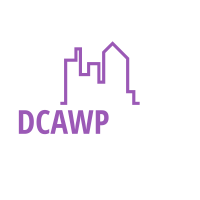
10 CRM Case Studies from the World’s Biggest Brands 2023
It is no news that customers are constantly demanding deeper and more meaningful relationships with their chosen brands. That’s why organizations are currently leveraging CRM software to serve their customers better.
Today, we’ve put together 10 CRM case studies from some of the world’s biggest brands . This article highlights CRM case studies uses and vital lessons you can replicate in your business.
Before we proceed, let’s look at the meaning of customer relationship management (CRM)
There are two main definitions of a CRM:
It refers to a business’s principles and strategies to engage better and retain its customers.
It refers to a software system that helps businesses to manage client relationships, leads, contacts and campaigns. Also, it allows companies to automate their processes and increases productivity.
Best CRM Case Studies
- Coca-Cola CRM
The Coca-Cola Company is one of the world’s oldest and most influential brands. With a presence in over 200 countries, Coca-cola started as a carbonated soft drink business. But today, they are a conglomerate with over 200 product lines servicing billions of customers globally.
Logically speaking, for them to exist across several decades and remain relevant and competitive says a lot about their customer service. That said; let’s examine their customer relationship management (CRM).
- Zara CRM Case Study
When you hear the word “Zara”, what come to mind are clothing, luxury, and lifestyle. Established in 1975, Zara is a Spanish multi-national retail clothing chain.
They specialize in clothing accessories, beauty, shoes, and other lifestyle products. Zara’s phenomenal success in fashion and beauty is a testament to its solid CRM strategy. They effortlessly delight their customers in a way that leaves them returning for more.
- Unilever CRM Case Study
Unilever’s mission statement is “to add vitality to life. We meet every day needs for nutrition, hygiene and personal care with brands that help people feel good, look good and get more out of life.”
Unilever’s CRM strategy focuses on elevating people’s well-being and helping them enjoy life to its fullest. This singular aim is the driving force behind their great customer experience initiatives, marketing campaigns, products, and positioning.
- BMW CRM Case Study
BMW’s mission is to “become the world’s leading provider of premium products and services for individual mobility.” You’ll agree that BMW has become the world’s leading provider of premium automobile products. But the big question is, how did they get there?
BMW CRM case study is not too distant from the others. Firstly, the focus is on treating customers fairly, which is clearly stated in their Supplier Program. Their suppliers and end-users are at the core of their CRM strategy, which has kept them going.
- Tesco CRM Case Study:
Tesco’s mission statement is “What we make matters better, together. This statement encapsulates Tesco’s aim to serve customers across cultures and backgrounds.
Tesco is among the first multi-national brand to adopt CRM software. In 2009, Tesco announced that they were adopting the RightNow CRM (now acquired by Oracle).
- Uber CRM Case Study:
Uber’s mission is “Transportation as reliable as running water, everywhere for everyone.” In other words, they aim to make transportation accessible at any time.
The big question is, what CRM does Uber use? Uber uses LiveRamp as their CRM anonymizer. Essentially, they LiveRamp CRM to segment users into specific life-cycle stages. It allows them to craft personalized and targeted campaigns that resonate with the customers.
- McDonald’s CRM Case Study
McDonald’s mission statement is to be our customers’ favorite place and way to eat and drink. Their mission statements depict McDonald’s passion for differentiation, uniqueness, and class.
McDonald’s CRM case study is hinged on their passion for differentiation, which is evident in the architectural designs of their restaurants, food recipe and taste, service delivery, and mode of operation.
Junaid Awan
Rybelsus coupons and the healthcare system: benefits and challenges, sunscreen myths: separating fact from fiction, related articles.

Protecting Your Bottom Line: The ROI of Investing in a Business Attorney

Maximizing Insurance Coverage for Damage Restore Services: What You Need to Know
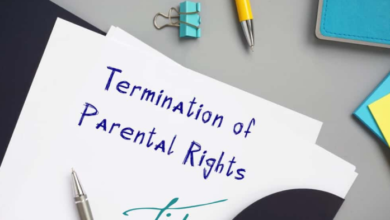
Termination of Parental Rights Under the Law
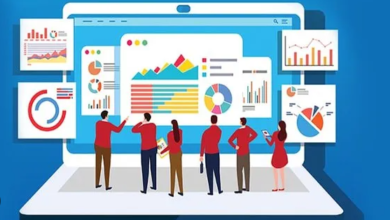
Unlocking the Power of Data Analytics in Modern Business Strategy
Leave a reply cancel reply.
Your email address will not be published. Required fields are marked *
Save my name, email, and website in this browser for the next time I comment.
Table of Contents
Coca-cola target audience , geographical segmentation , coca-cola marketing channels, coca-cola marketing strategy , coca-cola marketing strategy 2024: a case study.
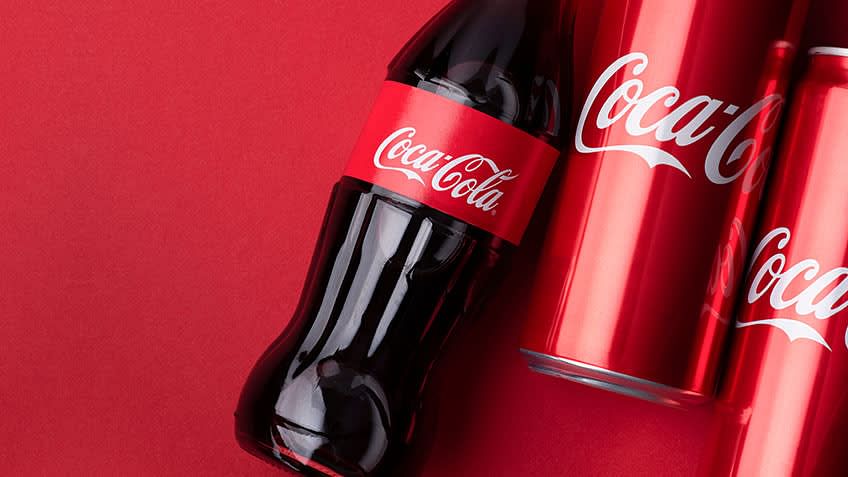
Become an AI-powered Digital Marketing Expert
Coca-cola has colossal brand recognition as it targets every customer in the market. Its perfect marketing segmentation is a major reason behind its success.
- Firstly, the company targets young people between 10 and 35. They use celebrities in their advertisements to attract them and arrange campaigns in universities, schools, and colleges.
- They also target middle-aged and older adults who are diet conscious or diabetic by offering diet coke.
Income and Family Size
It introduces packaging and sizes priced at various levels to increase affordability and target students, middle class, and low-income families and individuals.
Coca-Cola sells its products globally and targets different cultures, customs, and climates. For instance, in America, it is liked by older people too. So, the company targets different segments. It also varies the change accordingly, like the Asian version is sweeter than other countries.
Coca-Cola targets individuals as per their gender. For example, Coca-Cola light is preferred by females, while coke zero and thumbs up are men's favorite due to their strong taste.
Become One of The Highest Paid Digital Marketer
Coca-Cola initially employed an undifferentiated targeting strategy. In recent times, it has started localizing its products for better acceptability. It incorporates two basic marketing channels : Personal and Non-personal.
Personal channels include direct communication with the audience. Non-personal marketing channels include both online and offline media, such as
- Promotion Campaigns
- PR activities
Social Media
Become an ai-powered business analyst.
A uniquely formulated Coca Cola marketing strategy is behind the company's international reach and widespread popularity. The strategy can be broken down into the following:
Product strategy
Coca-cola has approximately 500 products. Its soft drinks are offered globally, and its product strategy includes a marketing mix. Its beverages like Coca-Cola, Minute Maid, Diet Coke, Light, Coca-Cola Life, Coca-Cola Zero, Sprite Fanta, and more are sold in various sizes and packaging. They contribute a significant share and generate enormous profits.
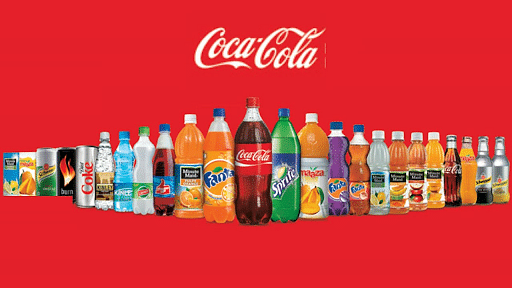
Coca-Cola Products
Master SEO, SEM, Paid Social, Mobile Ads & More
Pricing Strategy
Coca-Cola's price remained fixed for approximately 73 years at five cents. The company had to make its pricing strategy flexible with the increased competition with competitors like Pepsi. It doesn't drop its price significantly, nor does it increase the price unreasonably, as this would lead to consumers doubting the product quality and switching to the alternative.
Place Strategy
Coca-cola has a vast distribution network. It has six operating regions: North America, Latin America, Africa, Europe, the Pacific, and Eurasia. The company's bottling partners manufacture, package, and ship to the agents. The agents then transport the products by road to the stockist, then to distributors, to retailers, and finally to the customer. Coca-Cola also has an extensive reverse supply chain network to collect leftover glass bottles for reuse. Thus, saving costs and resources.
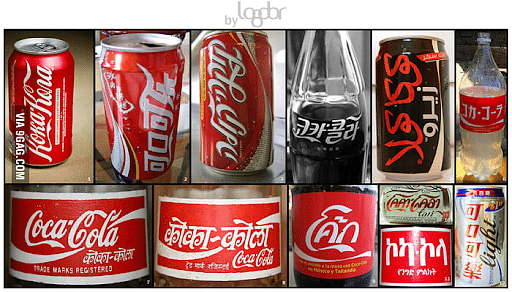
Coca-Cola’s Global Marketing
Promotion Strategy
Coca-Cola employs different promotional and marketing strategies to survive the intense competition in the market. It spends up to $4 million annually to promote its brand , utilizing both traditional and international mediums for advertisements.
Classic Bottle, Font, and Logo
Coca-Cola organized a global contest to design the bottle. The contest winner used the cocoa pod's design, and the company used the same for promoting its shape and logo. Its logo, written in Spencerian script, differentiates it from its competitors. The way Coca-cola uses its logo in its marketing strategy ensures its imprint on consumers' minds.
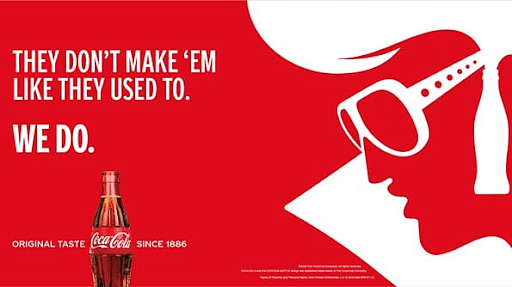
Coca-Cola’s Gripping Advertisements
Localized Positioning
The recent 'Share a coke' campaign, launched in 2018 in almost fifty countries, has been quite a success. The images of celebrities of that region and messages according to the local language and culture of the area target the local market.
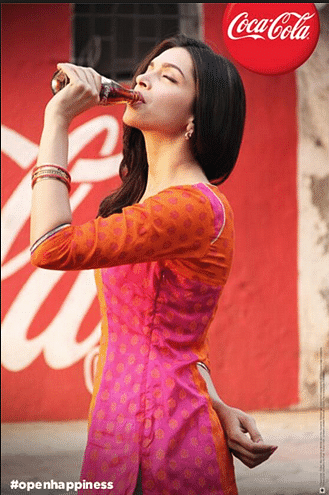
Coca-Cola Advertisement Featuring Celebrities
Sponsorships
The company is a well-recognized brand for its sponsorships, including American Idol, the NASCAR, Olympic Games, and many more. Since the 1928 Olympic Games, Coca-Cola has partnered on each event, helping athletes, officials and fans worldwide.

Coca-Cola as Official Olympics Partner
Learn About the Purdue Digital Marketing Bootcamp
With technological advancement, social media and online communication channels have become the most significant part of the Coca-Cola marketing strategy. It actively uses online digital marketing platforms like Facebook , Twitter, Instagram, YouTube, and Snapchat to post images, videos, and more. The Coca Cola marketing strategy primarily includes SEO , email marketing , content marketing , and video marketing .
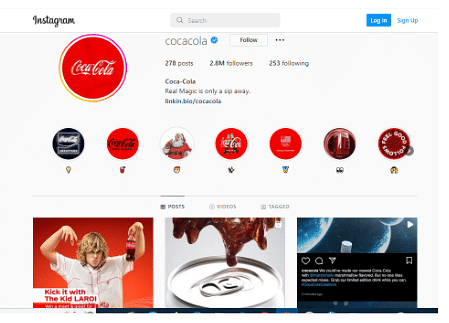
Coca-Cola’s Instagram Posts
Become a millennial Digital Marketer in just 6 months. Enroll now for our IMT Ghaziabad Digital Marketing Program course in collaboration with Purdue University!
Become a Certified Marketing Expert in 8 Months
Good marketing strategies build customer loyalty and contribute to a huge market share. Learn how to boost your brand's market value with the Post Graduate Program in Digital Marketing . Upgrade your skill set and fast-track your career with insights from Purdue University experts.
Our Digital Marketing Courses Duration And Fees
Digital Marketing Courses typically range from a few weeks to several months, with fees varying based on program and institution.
Recommended Reads
Digital Marketing Career Guide: A Playbook to Becoming a Digital Marketing Specialist
A Case Study on Netflix Marketing Strategy
12 Powerful Instagram Marketing Strategies To Follow in 2021
Introductory Digital Marketing Guide
A Case Study on Apple Marketing Strategy
A Complete Guide on How to Do Social Media Marketing
Get Affiliated Certifications with Live Class programs
Post graduate program in digital marketing.
- Joint Purdue-Simplilearn Digital Marketer Certificate
- Become eligible to be part of the Purdue University Alumni Association
Post Graduate Program in Business Analysis
- Certificate from Simplilearn in collaboration with Purdue University
- PMP, PMI, PMBOK, CAPM, PgMP, PfMP, ACP, PBA, RMP, SP, and OPM3 are registered marks of the Project Management Institute, Inc.
- Study Guides
- Homework Questions
Coke-cola (1)
- Today's news
- Reviews and deals
- Climate change
- 2024 election
- Fall allergies
- Health news
- Mental health
- Sexual health
- Family health
- So mini ways
- Unapologetically
- Buying guides
Entertainment
- How to Watch
- My Portfolio
- Stock Market
- Biden Economy
- Stocks: Most Actives
- Stocks: Gainers
- Stocks: Losers
- Trending Tickers
- World Indices
- US Treasury Bonds
- Top Mutual Funds
- Highest Open Interest
- Highest Implied Volatility
- Stock Comparison
- Advanced Charts
- Currency Converter
- Basic Materials
- Communication Services
- Consumer Cyclical
- Consumer Defensive
- Financial Services
- Industrials
- Real Estate
- Mutual Funds
- Credit Cards
- Balance transfer cards
- Cash-back cards
- Rewards cards
- Travel cards
- Personal Loans
- Student Loans
- Car Insurance
- Options 101
- Good Buy or Goodbye
- Options Pit
- Yahoo Finance Invest
- Fantasy football
- Pro Pick 'Em
- College Pick 'Em
- Fantasy baseball
- Fantasy hockey
- Fantasy basketball
- Download the app
- Daily fantasy
- Scores and schedules
- GameChannel
- World Baseball Classic
- Premier League
- CONCACAF League
- Champions League
- Motorsports
- Horse racing
- Newsletters
New on Yahoo
- Privacy Dashboard
Yahoo Finance
Calculating the intrinsic value of coca-cola femsa, s.a.b. de c.v. (nyse:kof), key insights.
Using the 2 Stage Free Cash Flow to Equity, Coca-Cola FEMSA. de fair value estimate is US$118
Coca-Cola FEMSA. de's US$97.12 share price indicates it is trading at similar levels as its fair value estimate
Our fair value estimate is 8.8% higher than Coca-Cola FEMSA. de's analyst price target of Mex$108
Does the April share price for Coca-Cola FEMSA, S.A.B. de C.V. ( NYSE:KOF ) reflect what it's really worth? Today, we will estimate the stock's intrinsic value by taking the forecast future cash flows of the company and discounting them back to today's value. We will use the Discounted Cash Flow (DCF) model on this occasion. Believe it or not, it's not too difficult to follow, as you'll see from our example!
Companies can be valued in a lot of ways, so we would point out that a DCF is not perfect for every situation. If you still have some burning questions about this type of valuation, take a look at the Simply Wall St analysis model .
Check out our latest analysis for Coca-Cola FEMSA. de
We're using the 2-stage growth model, which simply means we take in account two stages of company's growth. In the initial period the company may have a higher growth rate and the second stage is usually assumed to have a stable growth rate. To begin with, we have to get estimates of the next ten years of cash flows. Where possible we use analyst estimates, but when these aren't available we extrapolate the previous free cash flow (FCF) from the last estimate or reported value. We assume companies with shrinking free cash flow will slow their rate of shrinkage, and that companies with growing free cash flow will see their growth rate slow, over this period. We do this to reflect that growth tends to slow more in the early years than it does in later years.
A DCF is all about the idea that a dollar in the future is less valuable than a dollar today, and so the sum of these future cash flows is then discounted to today's value:
10-year free cash flow (FCF) forecast
("Est" = FCF growth rate estimated by Simply Wall St) Present Value of 10-year Cash Flow (PVCF) = Mex$161b
After calculating the present value of future cash flows in the initial 10-year period, we need to calculate the Terminal Value, which accounts for all future cash flows beyond the first stage. For a number of reasons a very conservative growth rate is used that cannot exceed that of a country's GDP growth. In this case we have used the 5-year average of the 10-year government bond yield (2.3%) to estimate future growth. In the same way as with the 10-year 'growth' period, we discount future cash flows to today's value, using a cost of equity of 8.2%.
Terminal Value (TV) = FCF 2033 × (1 + g) ÷ (r – g) = Mex$32b× (1 + 2.3%) ÷ (8.2%– 2.3%) = Mex$552b
Present Value of Terminal Value (PVTV) = TV / (1 + r) 10 = Mex$552b÷ ( 1 + 8.2%) 10 = Mex$251b
The total value is the sum of cash flows for the next ten years plus the discounted terminal value, which results in the Total Equity Value, which in this case is Mex$412b. The last step is to then divide the equity value by the number of shares outstanding. Relative to the current share price of US$97.1, the company appears about fair value at a 18% discount to where the stock price trades currently. Valuations are imprecise instruments though, rather like a telescope - move a few degrees and end up in a different galaxy. Do keep this in mind.
Important Assumptions
The calculation above is very dependent on two assumptions. The first is the discount rate and the other is the cash flows. If you don't agree with these result, have a go at the calculation yourself and play with the assumptions. The DCF also does not consider the possible cyclicality of an industry, or a company's future capital requirements, so it does not give a full picture of a company's potential performance. Given that we are looking at Coca-Cola FEMSA. de as potential shareholders, the cost of equity is used as the discount rate, rather than the cost of capital (or weighted average cost of capital, WACC) which accounts for debt. In this calculation we've used 8.2%, which is based on a levered beta of 0.800. Beta is a measure of a stock's volatility, compared to the market as a whole. We get our beta from the industry average beta of globally comparable companies, with an imposed limit between 0.8 and 2.0, which is a reasonable range for a stable business.
SWOT Analysis for Coca-Cola FEMSA. de
Debt is not viewed as a risk.
Dividends are covered by earnings and cash flows.
Earnings growth over the past year underperformed the Beverage industry.
Dividend is low compared to the top 25% of dividend payers in the Beverage market.
Opportunity
Annual earnings are forecast to grow for the next 3 years.
Good value based on P/E ratio and estimated fair value.
Annual earnings are forecast to grow slower than the American market.
Looking Ahead:
Valuation is only one side of the coin in terms of building your investment thesis, and it shouldn't be the only metric you look at when researching a company. DCF models are not the be-all and end-all of investment valuation. Rather it should be seen as a guide to "what assumptions need to be true for this stock to be under/overvalued?" For instance, if the terminal value growth rate is adjusted slightly, it can dramatically alter the overall result. For Coca-Cola FEMSA. de, we've put together three important aspects you should further research:
Financial Health : Does KOF have a healthy balance sheet? Take a look at our free balance sheet analysis with six simple checks on key factors like leverage and risk.
Future Earnings : How does KOF's growth rate compare to its peers and the wider market? Dig deeper into the analyst consensus number for the upcoming years by interacting with our free analyst growth expectation chart .
Other Solid Businesses : Low debt, high returns on equity and good past performance are fundamental to a strong business. Why not explore our interactive list of stocks with solid business fundamentals to see if there are other companies you may not have considered!
PS. The Simply Wall St app conducts a discounted cash flow valuation for every stock on the NYSE every day. If you want to find the calculation for other stocks just search here .
Have feedback on this article? Concerned about the content? Get in touch with us directly. Alternatively, email editorial-team (at) simplywallst.com. This article by Simply Wall St is general in nature. We provide commentary based on historical data and analyst forecasts only using an unbiased methodology and our articles are not intended to be financial advice. It does not constitute a recommendation to buy or sell any stock, and does not take account of your objectives, or your financial situation. We aim to bring you long-term focused analysis driven by fundamental data. Note that our analysis may not factor in the latest price-sensitive company announcements or qualitative material. Simply Wall St has no position in any stocks mentioned.

IMAGES
VIDEO
COMMENTS
Coca-cola' customer relationship management (CRM) strategy is at the core of their phenomenon growth. Established in May 8, 1886, by Dr John Pemberton, who later sold the business to Asa Griggs Candler, and a few others. Today the story is different, as Coca-Cola currently ranks as the 6th most powerful brand in the world.
The CRM system plays a pivotal role in building and sustaining meaningful customer relationships. Coca-Cola harnesses data-driven insights to comprehend consumer preferences and behavior, fostering enhanced engagement. Leveraging the CRM platform, Coca-Cola achieves effective sales management and forecasting.
Iconic beverage company Coca-Cola has famously kept its secret formula under wraps since its 1886 founding. While the legendary story of the elusive recipe has received a lot of press over the years, the most important driving force behind the global giant's success is as apparent as its red and white label: Coca-Cola goes above and beyond to keep customers happy.
As a result of the thesis, a more effective relationship management strategy for Coca-Cola was worked out to achieve a win-win between Coca-Cola and customers, meanwhile help Coca-Cola Co to adhere to the customer as the center, cultivate loyal customers and provide the best quality service. In addition, the thesis also emphasized the ...
Managing Customer Relationships at Coca-Cola. This document provides an overview of customer relationship management (CRM) strategies and a case study analysis of Coca-Cola's CRM approach. It begins with definitions of CRM and discusses key aspects like creating value for customers, customer retention, and common CRM models.
SAN FRANCISCO, Feb. 11, 2021 /PRNewswire/ -- Salesforce (NYSE: CRM ), the global leader in CRM, today announced that Coca-Cola bottlers in North America have partnered with Salesforce to digitally ...
Coca-Cola CRM: Case Study "We needed to get much faster, to work on collaboration, connectivity, and scalability — and all that in a mobile context. Salesforce has been a fantastic partner, and a great help for us." That's Coca-Cola Germany's CEO, Ulrik Nehammer. He's happy, because his customer service team is happy.
In this article, we will look at some CRM case studies from top companies that use CRM to grow their business and achieve their goals. 1. Coca-Cola: CRM for Inspiring Optimism and Happiness. Coca-Cola is one of the world's oldest and most influential brands, with a presence in over 200 countries and more than 200 product lines.
Swire Coca-Cola Case Study. For 200 years, Swire has grown into a highly diversified business group working in the aviation, beverage, food, industrial, marine services, and property industries, guided by a commitment to operational excellence and a forward-looking approach. Swire Coca-Cola, a division of Swire, has the exclusive right to ...
Coca-Cola is undoubtedly one of the most recognized brands in the world, with a market presence that dates back to its beginnings in 1886 when John Pemberton served the first Coca-Cola. Today, the Coca-Cola Company sells hundreds of beverage brands in more than 200 countries. It is calculated that the average person consumes approximately 275 ...
Coca-Cola increased customer engagement and brand loyalty by implementing personalization in its marketing campaigns. Customers felt like the company was speaking directly to them and their unique needs and interests, which created a deeper connection with the brand. This is supported by a survey by Infosys, which found that 80% of consumers ...
Coca-Cola's HR and Finance shared services are using Blue Prism's Digital Workforce to optimize operational performance - enabling a shift from an 8-hour day to a 24-hour day - with no additional head count. Existing staff are also liberated to focus on delivering ... Blue Prism | Coca Cola Case Study 5. Created Date:
2. The "Always Coca-Cola" Campaign. This is probably one of the most well-known marketing campaigns of all time. Responsible for the permanent branding of polar bears into Coke's company image, the "Always Coca-Cola" campaign began in 1993 when the company decided to experiment with a recent technological development: computer animation.
Innovation and transformation are the key points to business success. Coca- Cola is the world's largest distributor and producer of soft drink concentrates and syrups. Starting as a beverage manufacturer and retailer in 1886 with its flagship product, Coca-Cola. The marketing strategies, innovation and transformation are embedded in different culture that led to the sustainable growth of ...
This document discusses a case study about Coca-Cola's IT-enabled initiatives including supply chain management (SCM), customer relationship management (CRM), and collaboration efforts. Some key points discussed are: - Coca-Cola develops its own set of software services for bottlers to use in SCM, which standardizes processes. This standardization is important for efficiency across the large ...
Moreover, 3.1% of all beverages consumed around the world are Coca-Cola products. All this because of its great marketing strategy which we'll discuss in this article on Coca-Cola Marketing Strategy. Coca-Cola -. has a Market capitalization of $192.8 Billion (as of May 2016). had 53 years of consecutive annual dividend increases.
Pisano helped Coca-Cola to measure the CSAT score through collected feedback on different channels, such as the website and mobile app. Pisano kept the integration and infrastructure universally applicable, therefore Coca-Cola could use the same structure in different countries and markets without hassle. This way, Coca-Cola has the ability to ...
Best CRM Case Studies. Coca-Cola CRM; The Coca-Cola Company is one of the world's oldest and most influential brands. With a presence in over 200 countries, Coca-cola started as a carbonated soft drink business. But today, they are a conglomerate with over 200 product lines servicing billions of customers globally.
CRM strategies at Coca-Cola Coca cola is one of the world's largest beverage selling company providing its customers with more than 500 sparkling and still brands and more than 3,800 beverage options. There are 20 billion dollar products in the company's portfolio, 18 of which are available in condensed, low or non-calorie options. Customers in more than 200 countries consume more than 1.9 ...
Product strategy. Coca-cola has approximately 500 products. Its soft drinks are offered globally, and its product strategy includes a marketing mix. Its beverages like Coca-Cola, Minute Maid, Diet Coke, Light, Coca-Cola Life, Coca-Cola Zero, Sprite Fanta, and more are sold in various sizes and packaging. They contribute a significant share and ...
Case Study: Coca-Cola Company Overview The Coca-Cola Company, established in 1892, is a global beverage giant known for its iconic brand and extensive product portfolio. With operations in over 200 countries, Coca-Cola has a diversified product range that includes carbonated beverages, juices, sports drinks, and teas.
Question: Case study 1 Coca-Cola Is Everything: SCM, CRM, ERP, Social Media, You Name It If we told you that Coca-Cola had operating units in 50 countries around the world, you probably wouldn't be surprised. If we told you that Coca-Cola had been in business for almost 125 years, you probably wouldn't be surprised.
Introduction This report is concerned about the case study of coke-cola, which is a world-famous brand in the food and beverage industry. The Coca-Cola serves a variety of products which consumed by the users and covered a wide range of customers. This company have its presence in more than 200 countries (Coca-cola, 2024). Company itself feel responsible to the CSR activities and environment ...
Using the 2 Stage Free Cash Flow to Equity, Coca-Cola FEMSA. de fair value estimate is US$118 Coca-Cola FEMSA. de's US$97.12 share price indicates it is trading at similar levels as its fair value ...